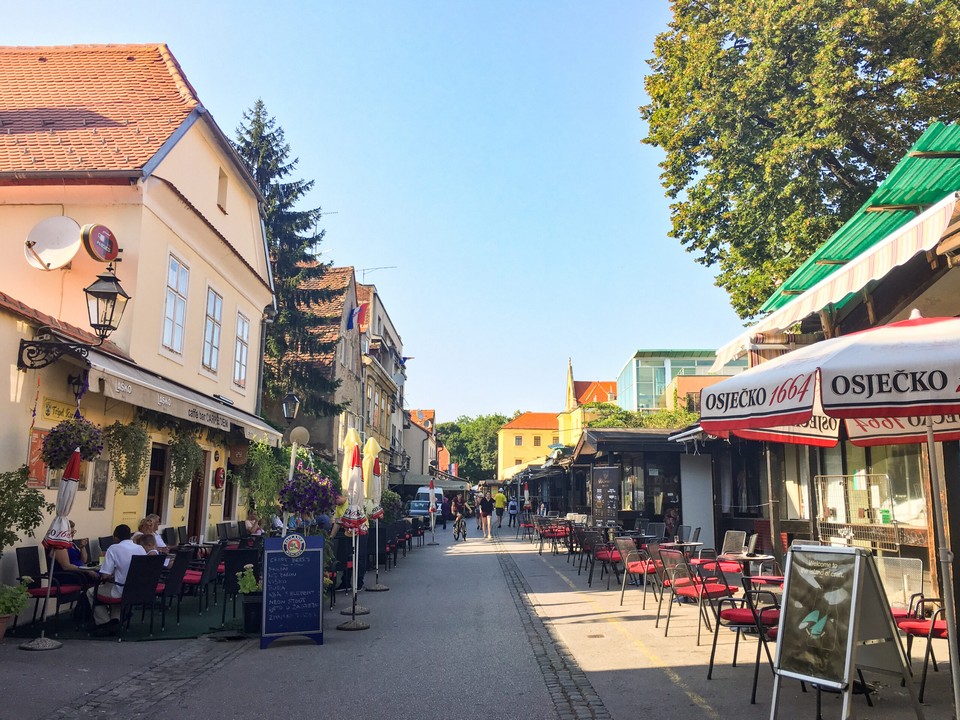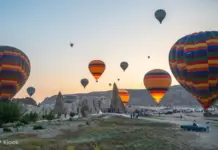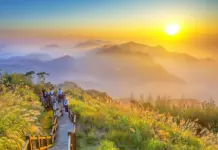The country of Croatia is located in Central Europe. Croatia is not only highly regarded for its economy, education, health, and quality of life, but also among the world’s top most popular tourist destinations. Besides Dubrovnik, one of the another Croatia’s top tourist destinations is the capital of Zagreb. This city not only owns captivating architecture, beautiful scenery, but also has a long history and a diverse culture. Why don’t you try to travel to Zagreb? So, is Zagreb safe for tourists, is Zagreb worth visiting, what to do in Zagreb and how to plan a perfect budget trip to Zagreb for the first-time? Let’s check out our Zagreb travel blog (Zagreb blog) with the fullest Zagreb travel guide (Zagreb city guide, Zagreb guide, Zagreb tourist guide) from how to get to Zagreb, best time to come, where to stay, best places to visit, Zagreb what to see and top things to do in Zagreb find out the answer!
- Croatia blog — The fullest Croatia travel guide & suggested 4D3N itinerary for first-timers
- Plitvice Lakes National Park blog — The fullest Plitvice guide on how to visit Plitvice Lakes National Park Croatia
- Dubrovnik travel blog — The fullest Dubrovnik travel guide for a great budget trip for first-timers
- The ULTIMATE Uji travel guide: Top attractions, best things to do in Uji Kyoto, Tips & MORE
- Kyoto itinerary 5 days: How to spend 5 days in kyoto perfectly?
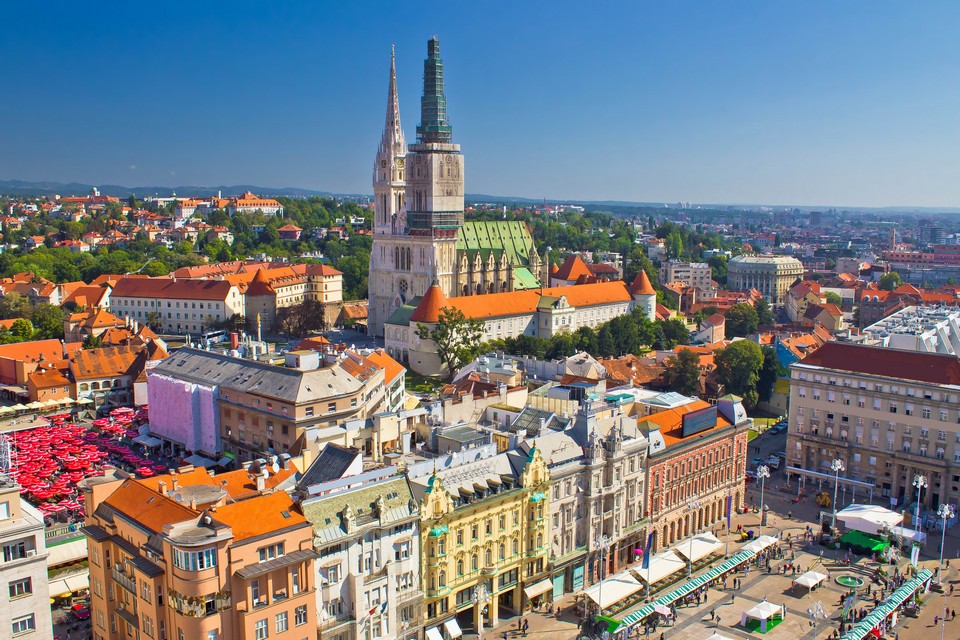
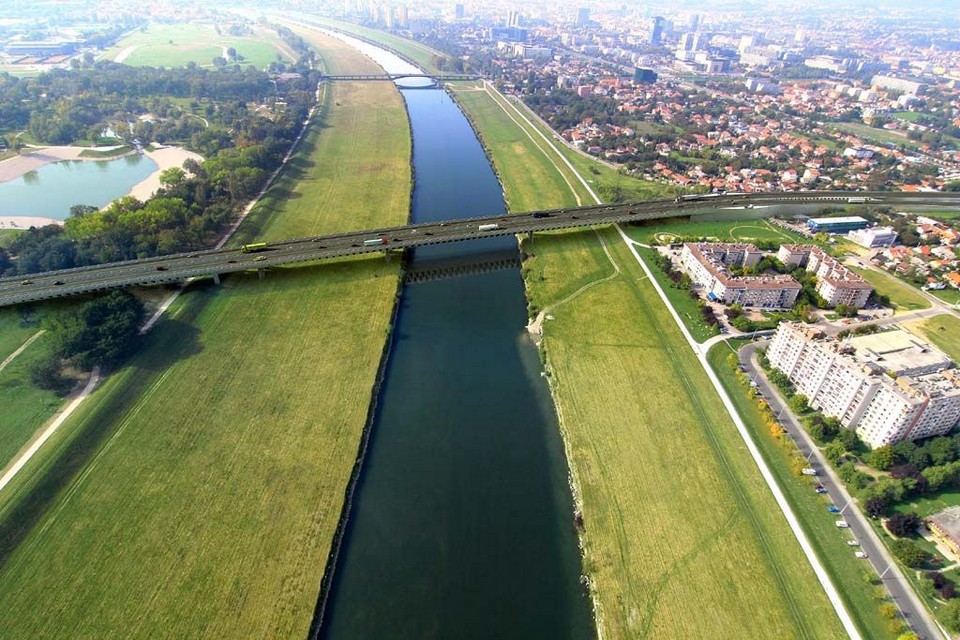

I did not intend to visit Zagreb, but wanted to visit the Plitvice Lakes National Park — one of the most beautiful places in Europe. But Zagreb was also a pleasant surprise, because despite being the capital, the city is quiet, peaceful, and most importantly, not very touristy. I had enjoyed this city more than I thought. Although it’s not on the list of hidden “gems” of Europe, but I still give Zagreb a special part in my memory.

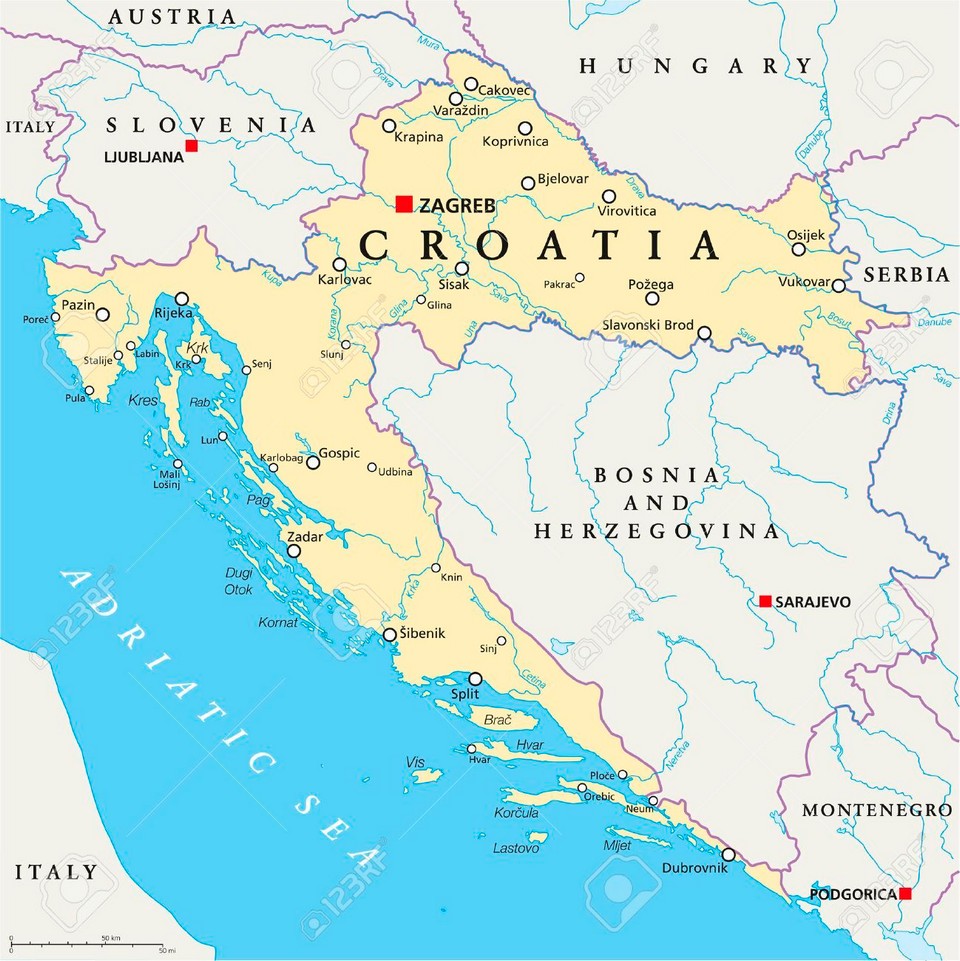
Zagreb travel blog: A brief introduction to the city of Zagreb
Zagreb is not only the capital but also the Croatia’s largest city with an area of about 641 km2 and a population according to the 2022 census of nearly 700 thousand people. Zagreb is considered the most important cultural, economic and political center of Croatia. Not only that, Zagreb is also an important intersection between Central Europe and the Adriatic Sea. Coming to Zagreb, you will definitely have wonderful experiences.
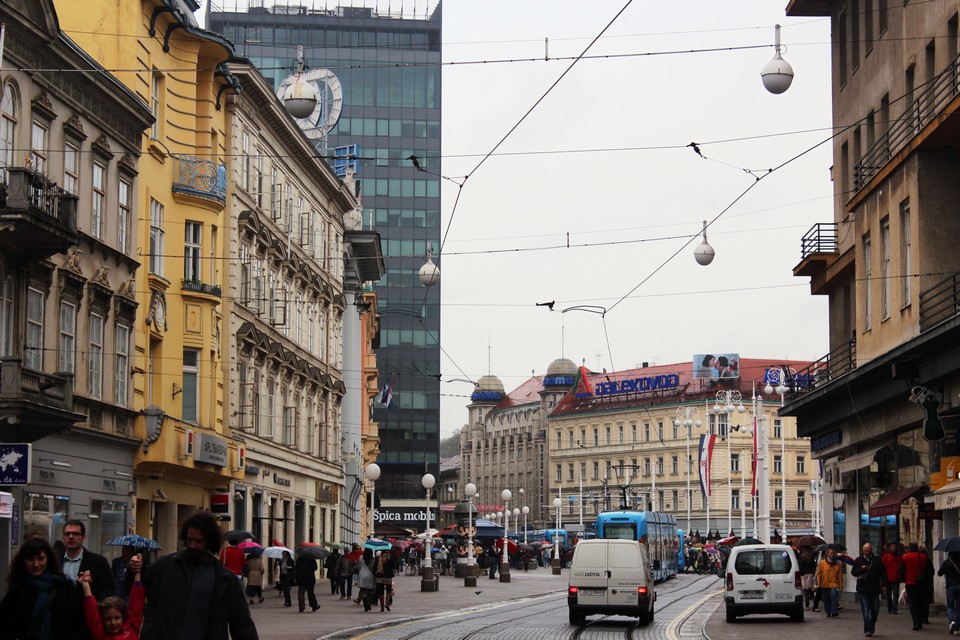
Few people know that Zagreb was formerly two separate towns with many contradictions, Kaptol and Gradec. If Kaptol is the home of monasteries, churches, museums… then the Gradec is the home of small merchants and craftsmen. The border land between the two towns, once considered dangerous, is now filled with buildings and streets, turning Zagreb into a unified, integrity bloc.
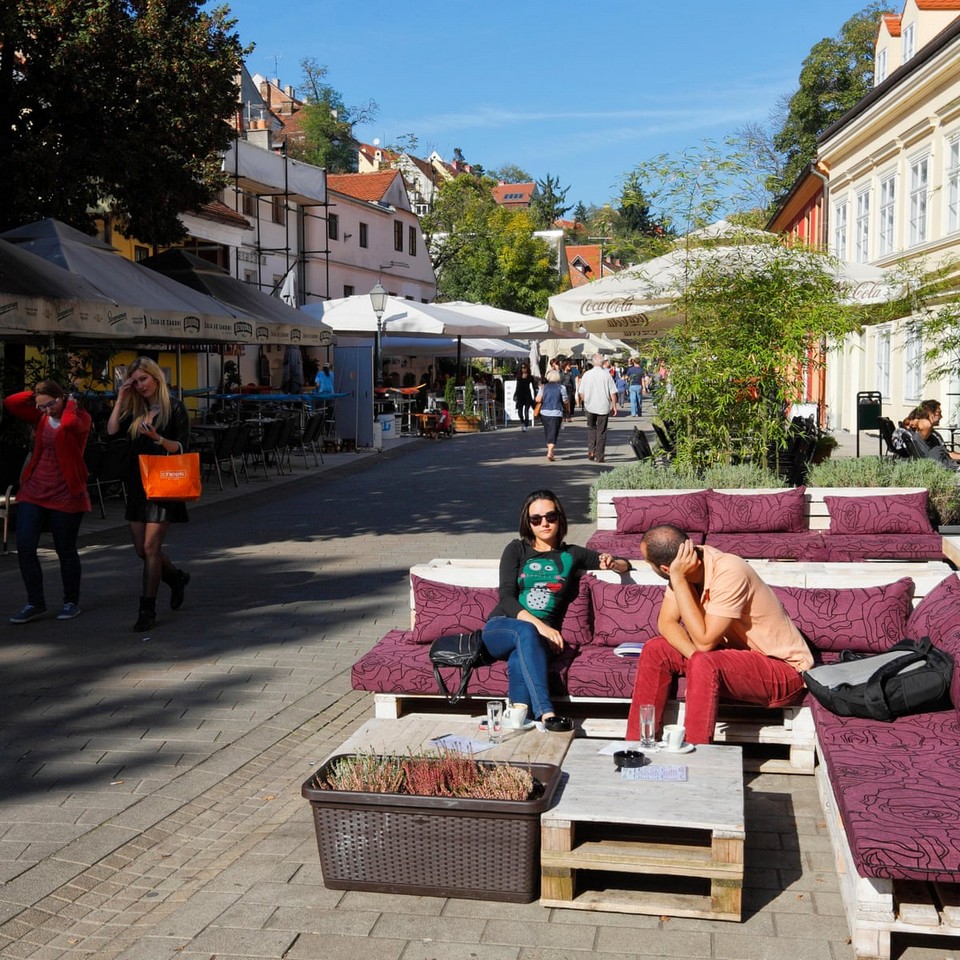
Although accounting for a quarter of the country’s population with nearly 1 million people, the atmosphere in Zagreb is not crowded or bustle and hustle. Traveling here, visitors can easily admire a large number of museums and squares, parks that offer lot of green spaces. For that reason, Zagreb is also known as a city of museums with works imbued with medieval culture and signature architectural styles of Central Europe.
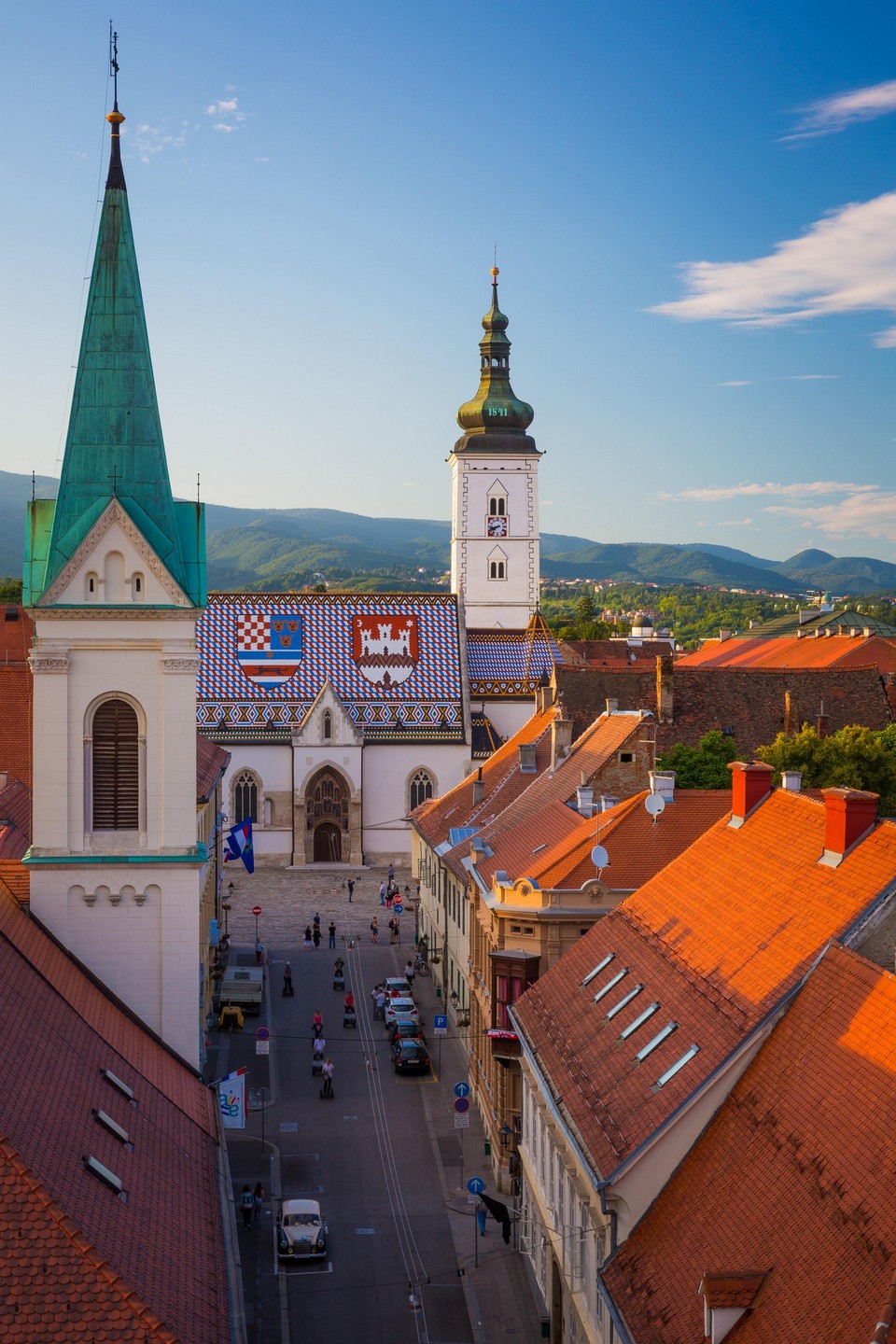
Zagreb blog: When is the best time to visit
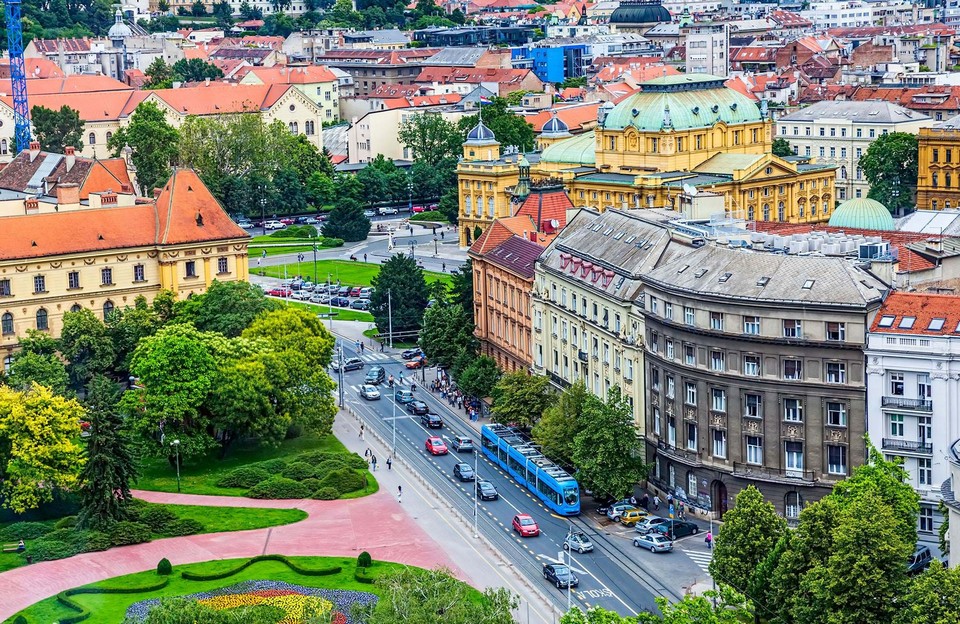
Zagreb is a modern city, ideal for lovers of shopping, culture, food, those traveling with friends, family or couples. Thanks to its many events, Zagreb is a destination that you can visit all year round. It’s especially beautiful in spring and summer which are best times of the year to stroll through the shopping streets or enjoy a drink on the spacious terraces of the Croatian capital’s cafes. Zagreb is also an incredible Christmas destination. The city’s Christmas market was voted the most beautiful Christmas market in Europe and is also unparalleled.
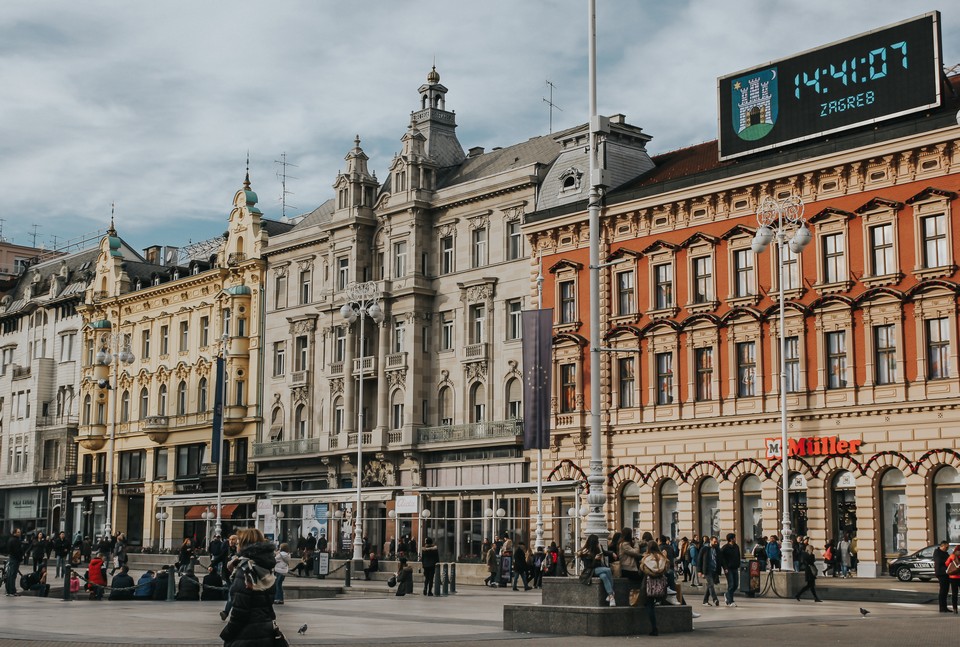
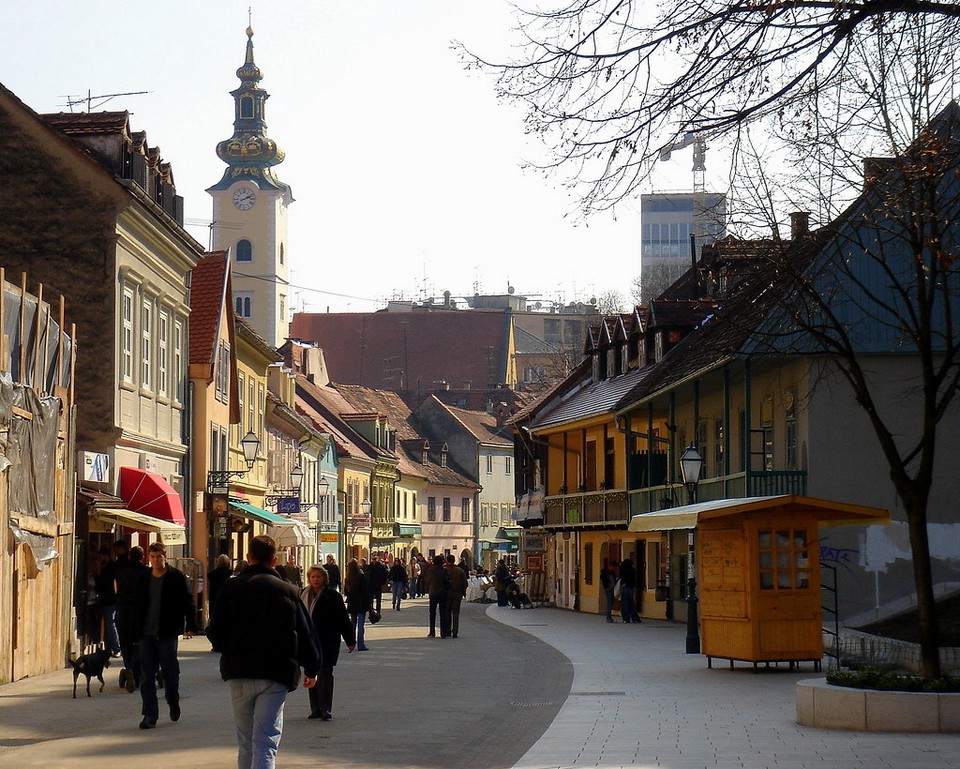
The city of Zagreb is influenced by continental climate. It is also divided into 4 quite distinct seasons of the year. Summers are usually hot and dry. Winter weather is very cold and often snowy from January to March. Autumn weather is cool and often foggy. The period from June to August every year, the number of tourists from all over the world to Zagreb is very crowded, also the peak tourist season. Therefore, service prices will also increase accordingly.
To saving travel costs you should go around May or September every year. At that time, the weather is also quite nice and the number of tourists is not too high.
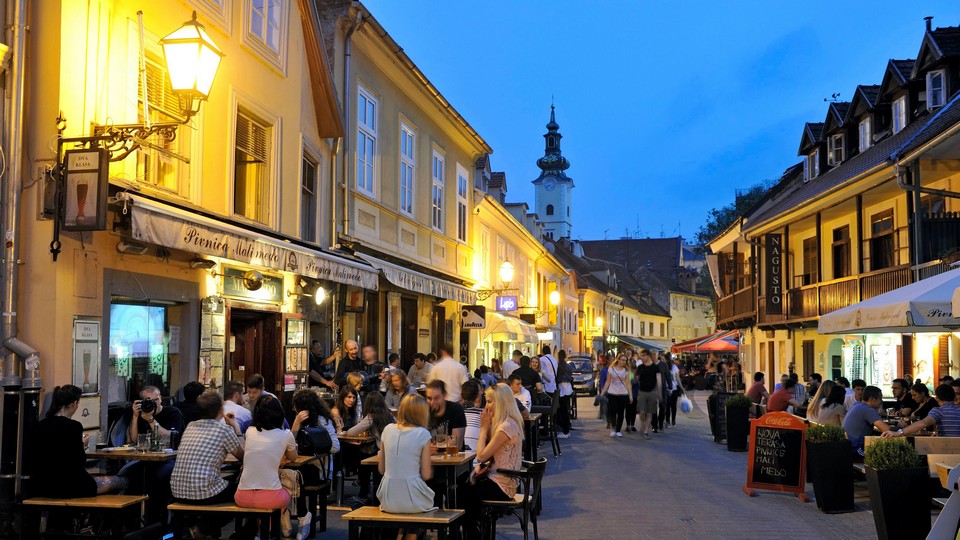
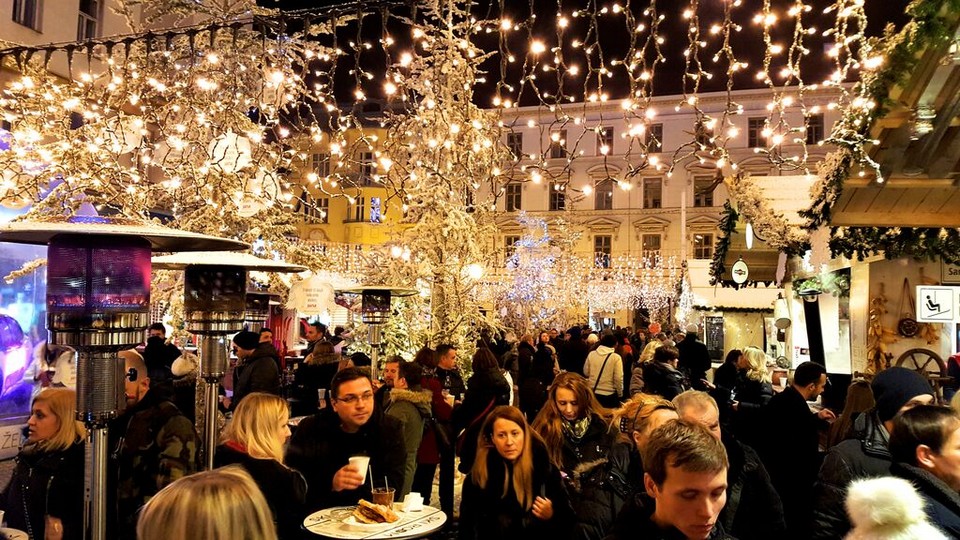
Zagreb travel guide: How to get to Zagreb?
Plane
Zagreb Franjo Tuđman Airport or Zagreb Airport (Croatian: Zračna luka Zagreb) (IATA: ZAG, ICAO: LDZA), also known as Pleso Airport (Address: Ul. Rudolfa Fizira 21, 10150, Zagreb, Croatia) named after the nearby suburb of Pleso, is Croatia’s main international airport and also a base for the Croatian Air Force. The airport is located 10 km from the central railway station of Zagreb: Zagrebački Glavni Kolodvor. That’s why most visitors to Zagreb choose to get here by plane.
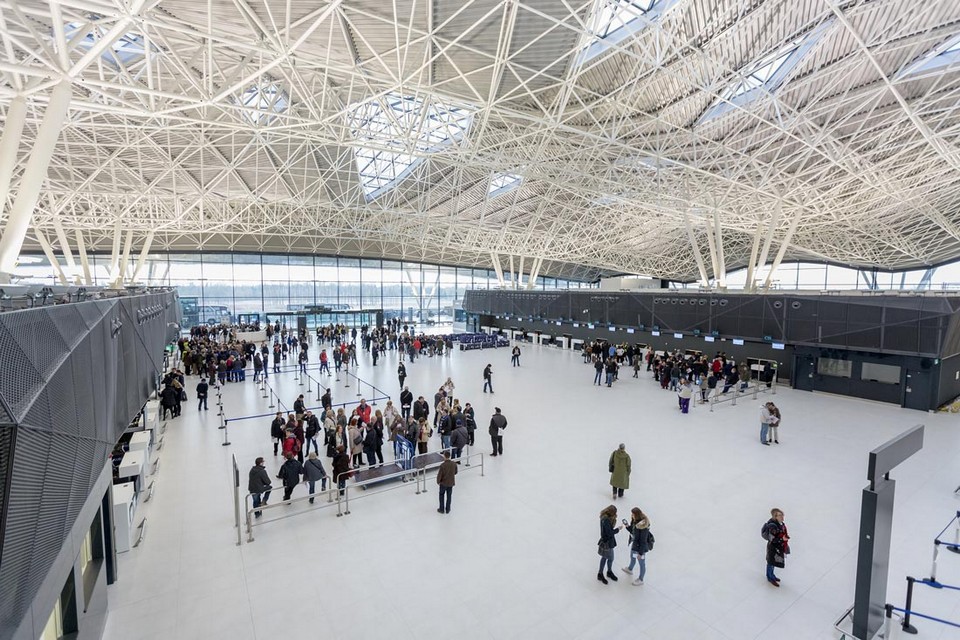
To find suitable flights with cheap tickets, you can refer to Google Flights or Skyscanner.
From Zagreb Franjo Tudjman Airport, the most economical way to get to the city center is by airport shuttle bus. This line will take you to Zagreb Central Station as mentioned above section.
You can also catch a taxi in front of the airport but it will cost about 200 kunas (HRK) ($30).
Train
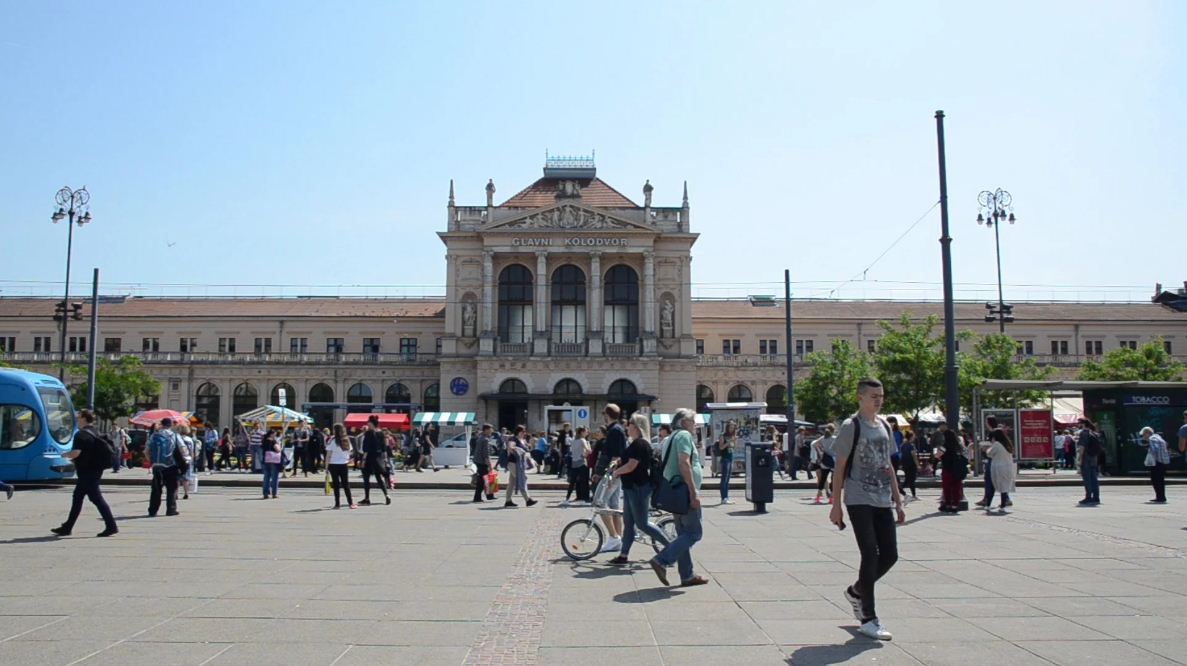
Zagreb is connected to other European cities such as Vienna, Budapest, Zurich or Munich, etc. by a modern railway system.
That time, I went to Zagreb from Ljubljana (the capital and largest city of Slovenia). In my opinion, the most beautiful route to visit that area is from Slovenia, down to Croatia, to Budapest (or Prague), and return to Italy. To find tickets and train routes, refer here.
Zagreb guide: Getting around the city

The most popular type of public transport here is the tram. Zagreb tram system consists of 17 day and 4 night lines that can take you to all the famous attractions around the city. You can easily buy tram tickets at newsstands in the city or can also buy directly when boarding.

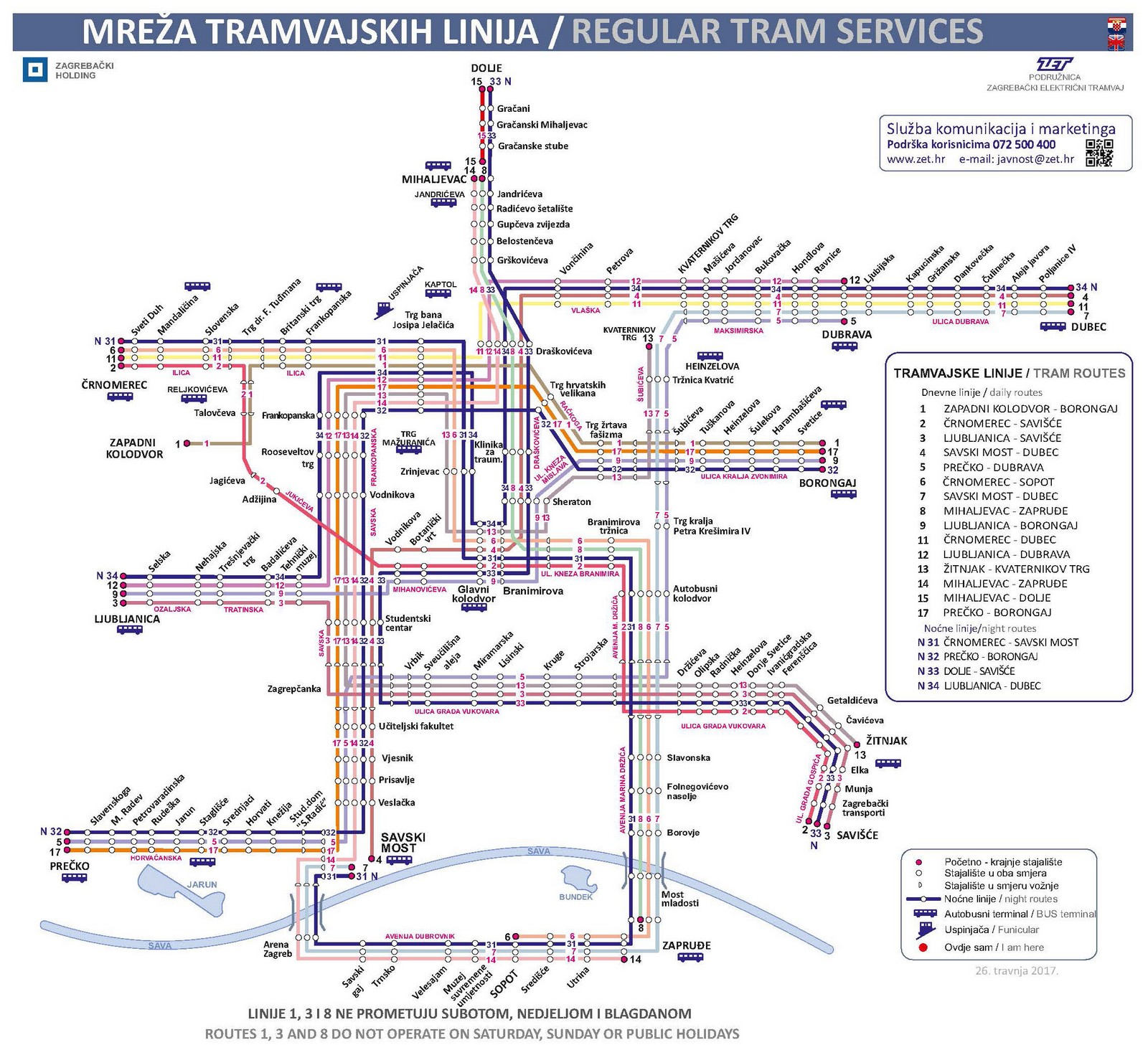
Buses in Zagreb are also very useful as there are several routes that run through night. In particular, the city of Zagreb is very interested in tourism when deploying 2 bus routes exclusively for tourists with affordable prices.
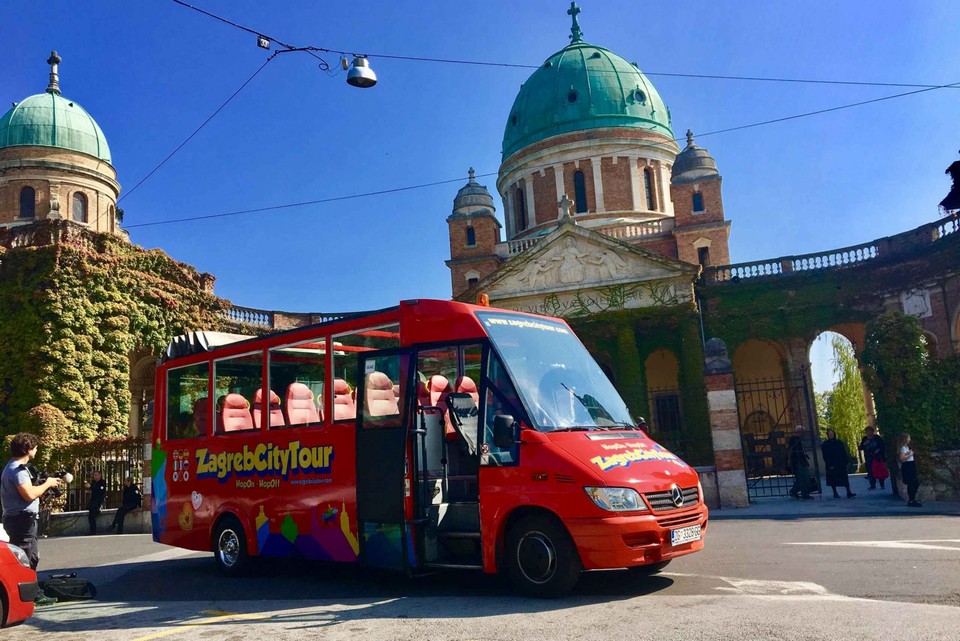
Hop-On Hop-Off Panoramic Bus Tour in Zagreb
To go from the Lower Town neighborhood to the Upper Town neighborhood, visitors can also use the Zagreb Funicular — one of the oldest means of transportation in the city.
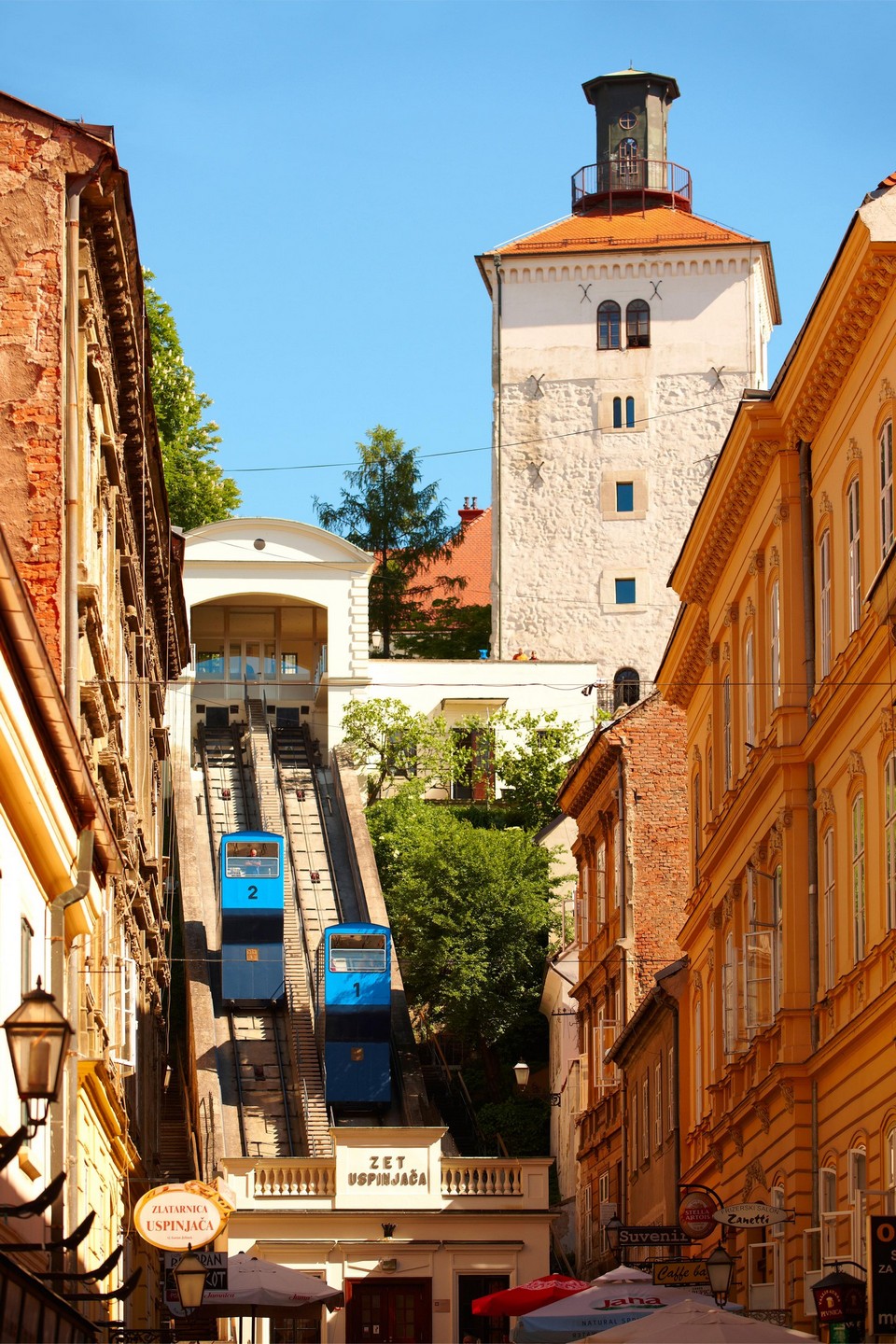
Some traveling tips
- Moving in Zagreb is also easy, mainly using tram, operating by the Zagrebački električni tramvaj (ZET). The bus is mainly serve the suburbs routes.
- Tickets can be purchased on trams/buses from the driver (but not on new trams). Or buy at the TISAK kiosks.
- In addition, there are also two convenient ways to buy bus or tram tickets: Buy via SMS and by prepaid card. The first way is similar in Prague, the latter similar in Amsterdam (^^!). If you want to buy by SMS, send ZG message to 8585. To buy by a prepaid card, go to ZET points of sale, TISAK kiosk or iNovine. This card costs 10kuna (about 1.33 euros), and can be topped up to 1000 kunas. This card can be used for a group too, which is quite convenient. Charged by ticket, not by km like in Amsterdam.
- You can also rent bicycles in Zagreb! In Zagreb there is a bike sharing system called Nextbike. You need to download its app, activate with 75kuna, that amount will be deducted from the time of use. But you must return it within 24 hours in advance, or else 750kuna will be deducted.
- Oh, WiFi free is everywhere, and it has strong signal.

Zagreb travel blog: Where to go, top things to do in Zagreb, what to do in Zagreb
Gornji Grad (Upper Town) and the Church of St. Mark
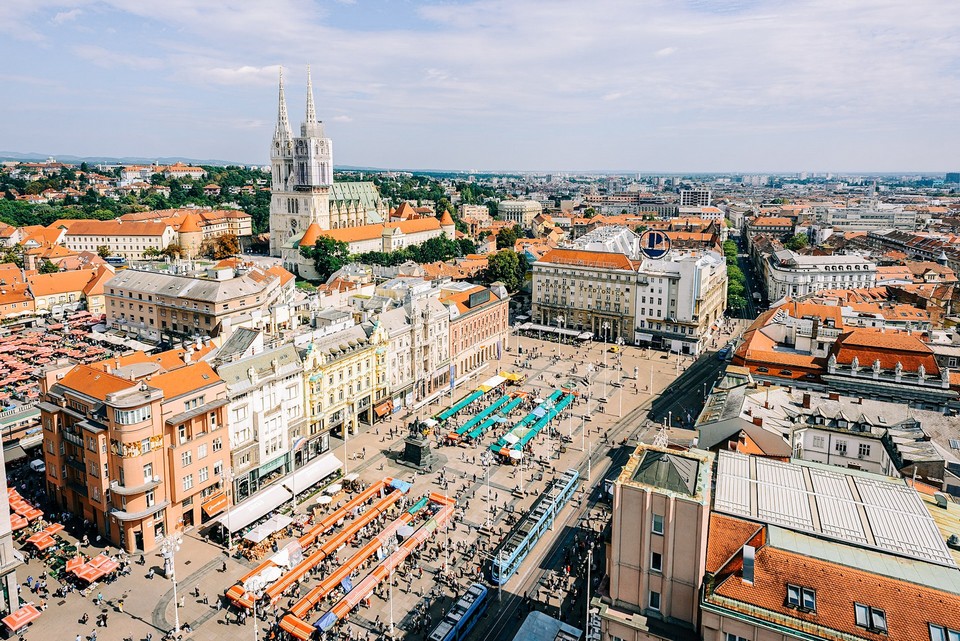
It will be a great start if you explore Zagreb starting from the Gornji Grad historic district. It has cobblestone streets and ancient red-tiled houses that give us a sense of excitement, tranquil. Gornji Grad offers many famous attractions that you can explore such as Kaptol square or St. Mark’s church… Tourist highlights here include Kaptol Square, Dolac market or the Stone Gate leading to the old Gradec town (Lower Town). One of the most prominent landmarks in this area is the church of St. Mark, with its elaborate tiled roof.

This is one of the main tourist attractions in Zagreb famous for its Dolac market, St. Mark’s Church, Kamenita Vrata (Stone Gate), and Cathedral of Zagreb. Saint Mark’s Square (Trg Svetog Marka) is the symbol of the Upper Town and also of the city of Zagreb. In the center of the square is the church of St. Mark, famous for its roof representing the weapons of the Tripartite Kingdom (Croatia, Dalmatia and Slavonia) and of the city of Zagreb.
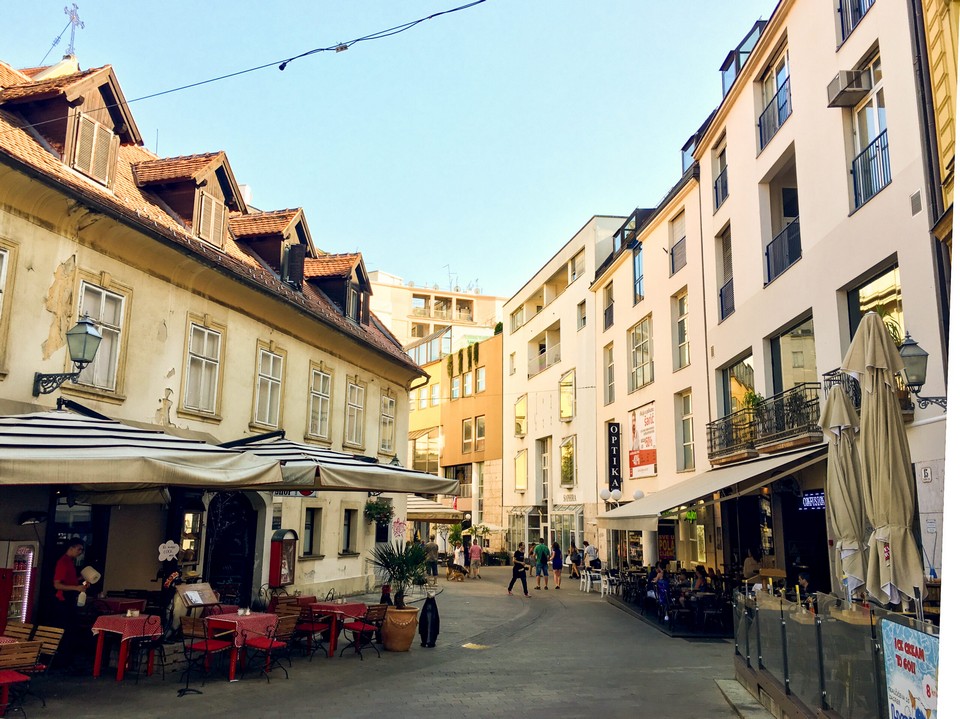

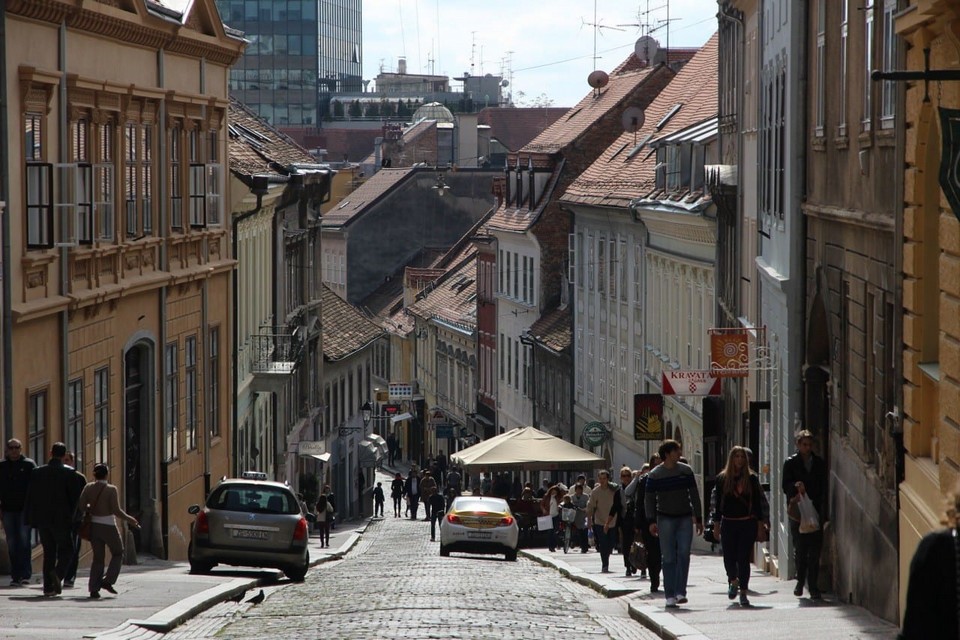
Adhering to the “go to get lost” criterion, I go to almost every city in Europe without using a map, so many times I don’t know where to go, just go and go. Go home and then look up the information about each place where I took pictures, read the history about it, then delightful “wow”. Upper town is super comfortable, bustling and mixed with the feeling of slowness like in a movie.
Ban Jelacic Square
Ban Jelačić Square is Zagreb’s central square and is also a pedestrian zone. A place where Croats gather for big events (especially to watching big football matches or major concerts). This is a central point close to the backbone of Zagreb and Dolac market. Most of the buildings and houses surrounding the square date from the 19th century, and showcase a variety of architectural styles, from Biedermeier to Art Nouveau and Postmodernism.
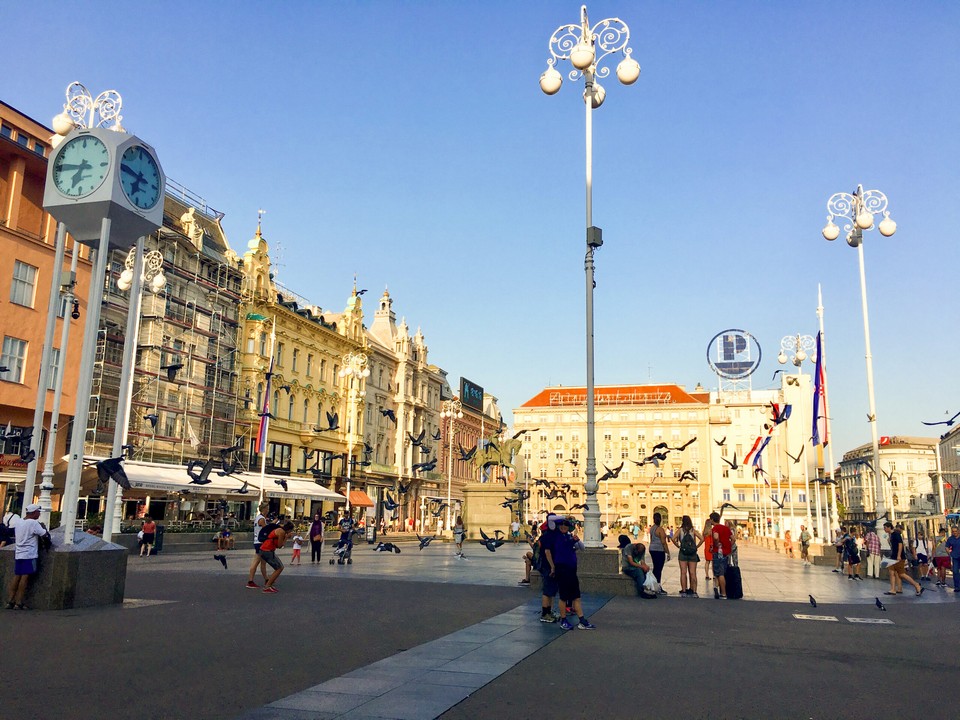
It can be said that Ban Jelacic square is very “European style”, but it seems to be bring more cozy atmosphere than in other Western European countries. This is a gathering place for young people to have fun. It connects to the Ilica central shopping street of Zagreb. The atmosphere is always bustling, vibrant and full of life.
Ban Jelačić Square stands at the center of Zagreb’s social life and the most popular gathering points are below the clock, on the west side of the square, and at the ponytail — an allusion to a large statue of Ban Josip Jelačić on a horse that placed in the center of the square.
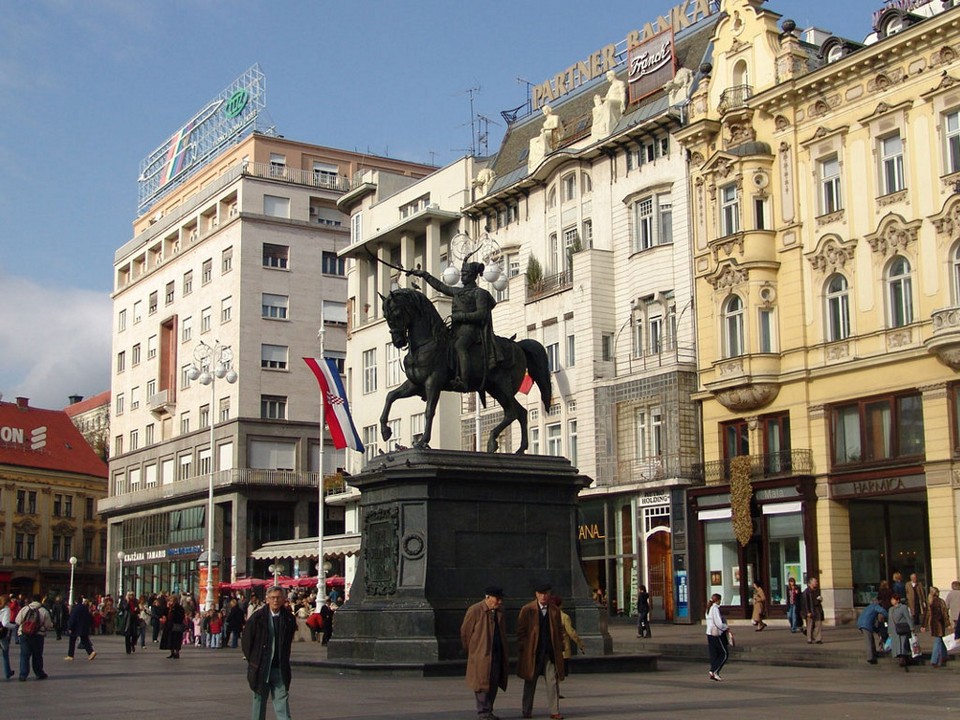
Zagreb Cathedral of the Assumption of the Blessed Virgin Mary (Cathedral of Zagreb)

Address: 10000, Zagreb, Croatia
Cathedral of Zagreb is the tallest building in Croatia, built in the 13th century. Due to the unique limestone structure, the church has been continuously repaired for more than 20 years and is expected to be completed soon in the next few years. Zagreb Cathedral sits on the ruins of another church dating from the early 1200s. The church you see today was built in the mid-13th century. The most striking architectural parts of this church are two symmetrical towers carved in detail with a height of 108m in Gothic architecture. Don’t forget to visit the church’s treasure trove of valuable works of art and antiquities inside it.

For me, the church is the same everywhere. I’ve looked at all kinds in the east and the west. But the church here has a beautiful and spacious square and surrounding area. The important thing is that there is no European “authoritative” atmosphere, but a more friendly feeling. Zagreb’s cathedral is Gothic in style, the details are so delicate that it’s amazing.
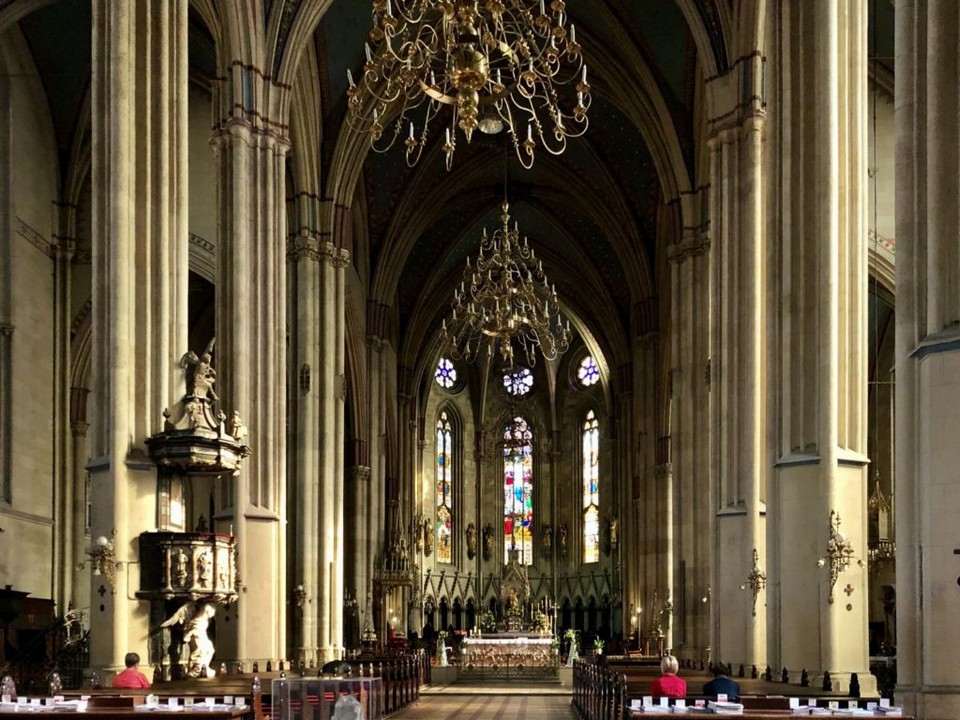
Ilica Street
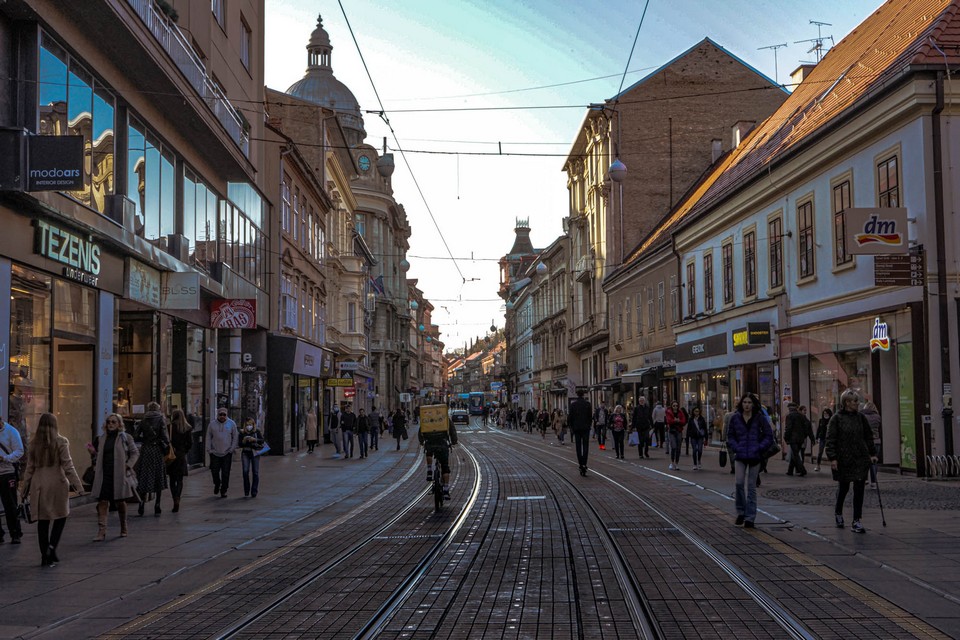
Ilica Street (nearly 6 km long), is one of the tourist attractions in Zagreb famous for its busiest shopping place. This place is ideal for people who love shopping, for a drink on the terrace or for dinner. You will find everything from the most expensive to the cheapest things in shops and stores along the street.
Tkalčićeva Street
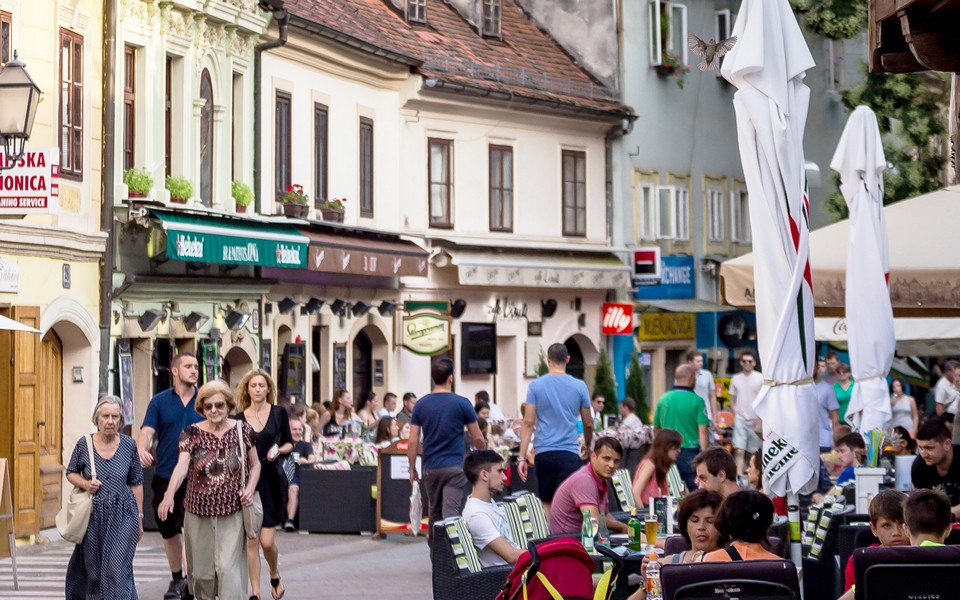
In Zagreb, there is a very beautiful and intimate area that is Tkalciceva street, made up of gently colored houses of Eastern European style, under the street full of cafes, restaurants. Coming here to relax and drink coffee is very comfortable.
Visiting Zagreb, visitors can join hiking tours or relax by the Sava river. In addition, the city is also attractive thanks to the large number of attractive bars, restaurants, and souvenir shops, concentrated mainly in the Tkalciceva area.
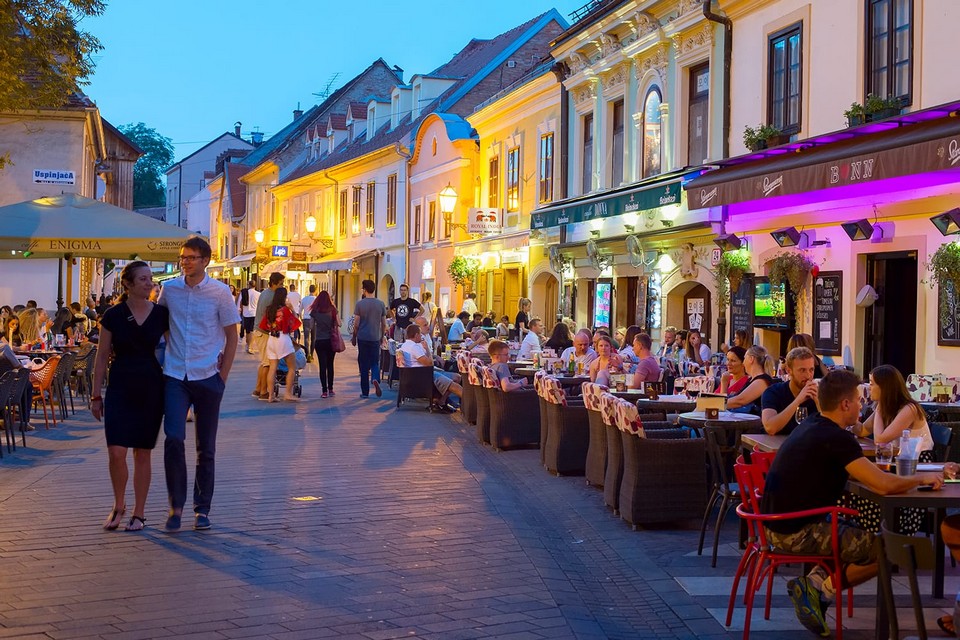
Stone Gate (Kamenita vrata)

Stone Gate is one of the few remaining ancient city gates built in the 13th century in Zagreb. Historically, the capital Zagreb has been burnt four times, damaged most of the city, but only the Stone Gate still remain as a challenge to the god of fire and this ancient city gate still hide many mysterious stories . Right in the heart of Stone Gate is a small chapel that always attracts tourists, but most of them are locals who come to visit and worship. Above the altar in the stone alcove that has been dyed black by candlelight for more than 200 years is a picture of the Virgin Mary and the Christ Child.
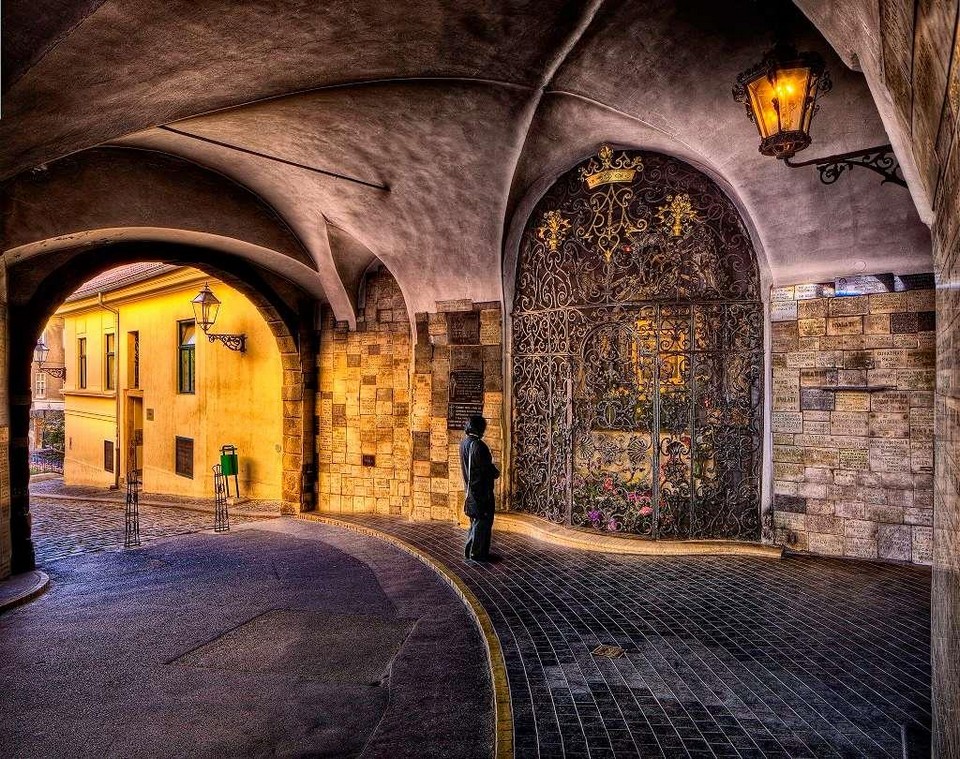
Locals consider this painting as the patron saint of the city. No matter how busy or in a hurry, if they pass by the city gate, they will take the time to light up a candle and whisper prayers for health and peace. In the late fire in 1731, Zagreb was destroyed by the god of fire, Stone Gate was also badly damaged, everything around was burned, but only this painting exists intact.

The city has not been burnt since a small chapel was erected inside Stone Gate in 1778. This stone gate is the final gate of Gradec. Go through this gate is to go to the lovely Radiceva ancient street of Donji grad (Lower Town).
Mirogoj Cemetery
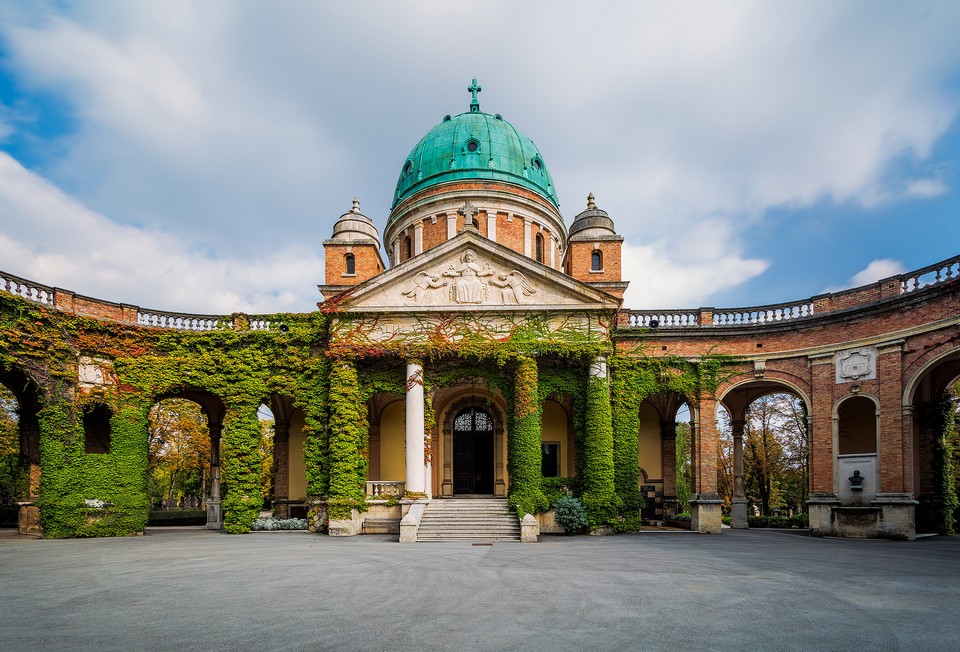
Address: Aleja Hermanna Bollea 27, 10000, Zagreb, Croatia
Hours: Open 24 hours
Perhaps this is a city that owns extremely weird destinations when tourists choose its cemetery to visit! It sounds like a myth until we see extremely beautiful photos, covered in fresh green with impressive dome architecture, enchanting visitors who are passionate about beauty. Mirogoj cemetery was designed in 1876 by the Austrian architect, Herman Bolle, the father of many other buildings around Zagreb. The domes are magnificent when seen from outside, looking like a majestic fortress but feeling more graceful inside. The tombs inside are extremely skillfully decorated like real works of art. Highlights here are the tomb of Petar Preradović — a poet, writer, and military general and Ivan Mestrovic’s bust by Vladimir Becić sculptor. The creativity of the art here has turned Mirogoj into one of the most beautiful cemeteries in Europe.
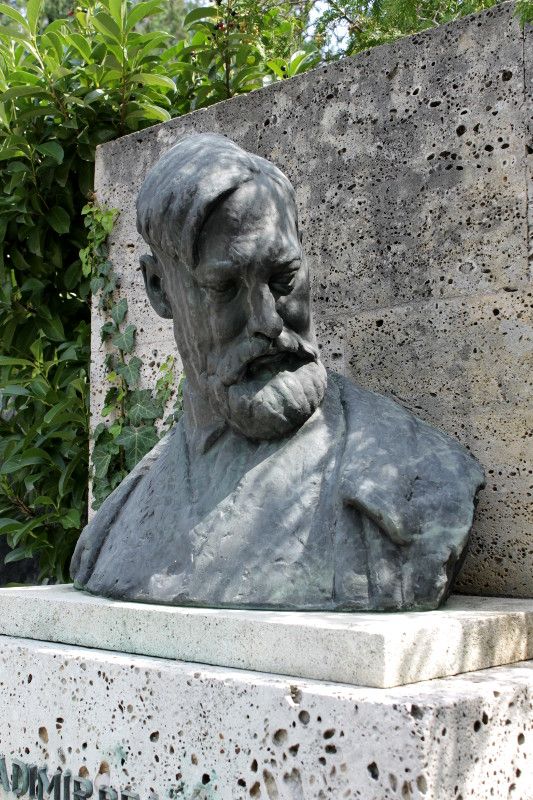
Street Art
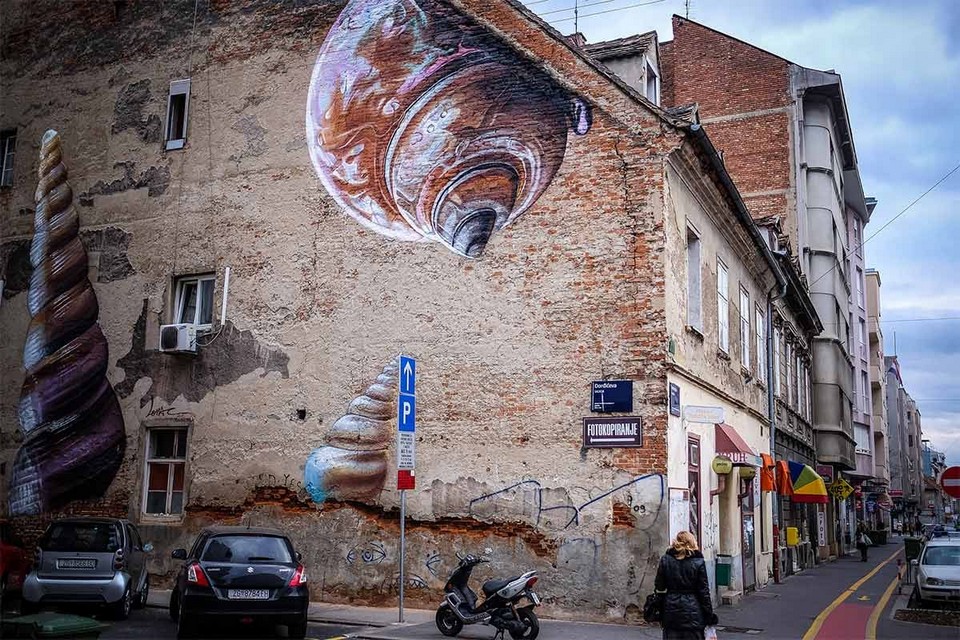
Zagreb is also a city full of art as every street here looks like a veritable gallery, with an incredible amount of sculptures and graffiti, earning public acclaim. This is my favorite thing of Zagreb. Like Prague, Budapest, Ljubljana in particular or Europe in general, street art is flourishing. In Zagreb they have a very vibrant color.
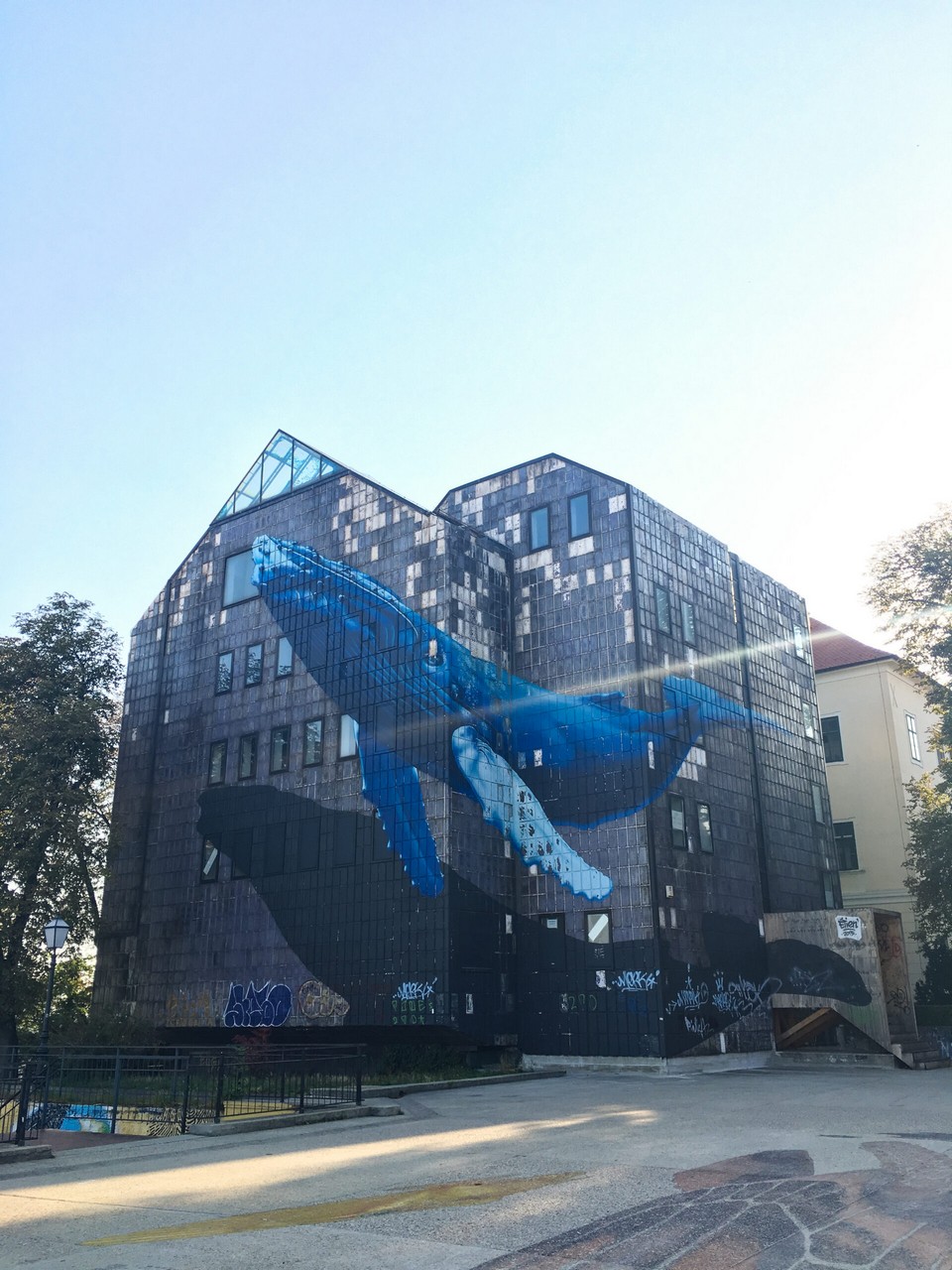
Museum of Broken Relationships
Address: Ćirilometodska ul. 2, 10000, Zagreb, Croatia
Hours: 10AM–9PM
This museum was especially born because of the thought that people who are born, grow up, get married and then die have moments to remember and celebrate, but love relationships are probably equally important in everyone’s life are neglected, especially when they are broken. A couple of Croatian artists, Olinka Vištica and Dražen Grubiši, after 4 years in love and breaking up, they didn’t know what to do with the objects that were once attached, so they decided to meet once to find solution for the fate of these mementos. And from this reluctant meeting in 2003, helped them come up with the idea to jointly open a unique museum in the world displaying artifacts contributed by brokenhearted couples.

After nearly three years of conducting and calling for responses with countless artifacts sent from all over the world, the museum was officially opened in 2006. Here, visitors will find quite special artifacts such as an axe with the owner’s caption as a girl, used to split souvenirs after a breakup; sexy shoes that a guy buys for his lover; a breast pad given by a girl with the caption that her ex-boyfriend required her to wear it every time she went on a date; Or simply a Champagne cork to celebrate a British guy sent to the museum after breaking up with his newlywed wife, because he discovered that she had betrayed him before the wedding day…
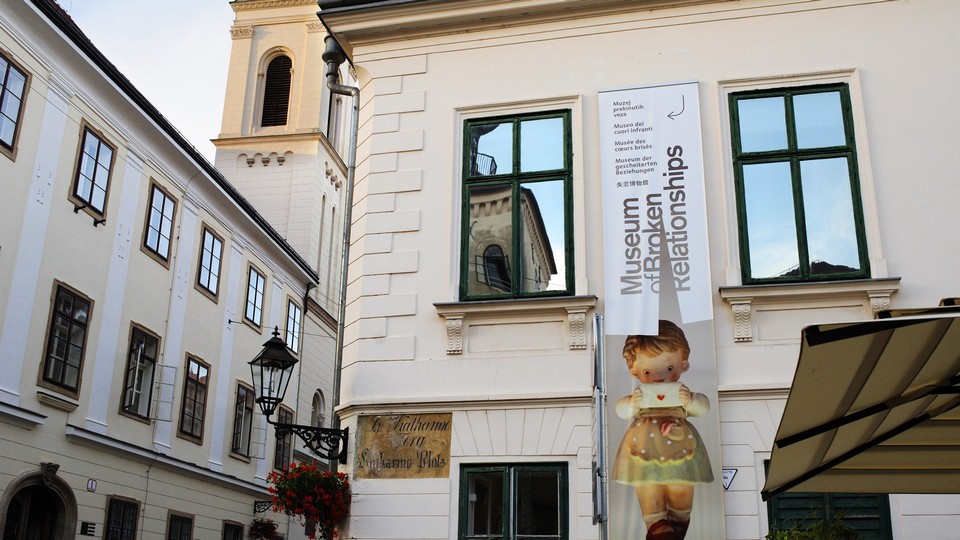
Choose a park to PICNIC!!!
In the true spirit of the picnic fanatic, I have compiled a list of the ideal natural parks to relax in Zagreb. Unfortunately, that time, my two friends who traveling with me were not slow and lazy people like me, so I didn’t have the opportunity to lie down in a certain park. However, I will still list a few parks that I already have in mind in Zagreb’s long list of lovely parks!
- Bundek City Park (Gradski Park Bundek): This is an endlessly beautiful lake park with clear blue lake water and peaceful scenery. Most importantly, you can swim here. Address: Ul. Damira Tomljanovića, 10000, Zagreb, Croatia.
- Green Horseshoe (Lenuci Horseshoe): This is an extremely large park complex, inside there are many architectural works of rich aristocrats or art galleries. If you have abundant time, you should definitely to come here for a walk!
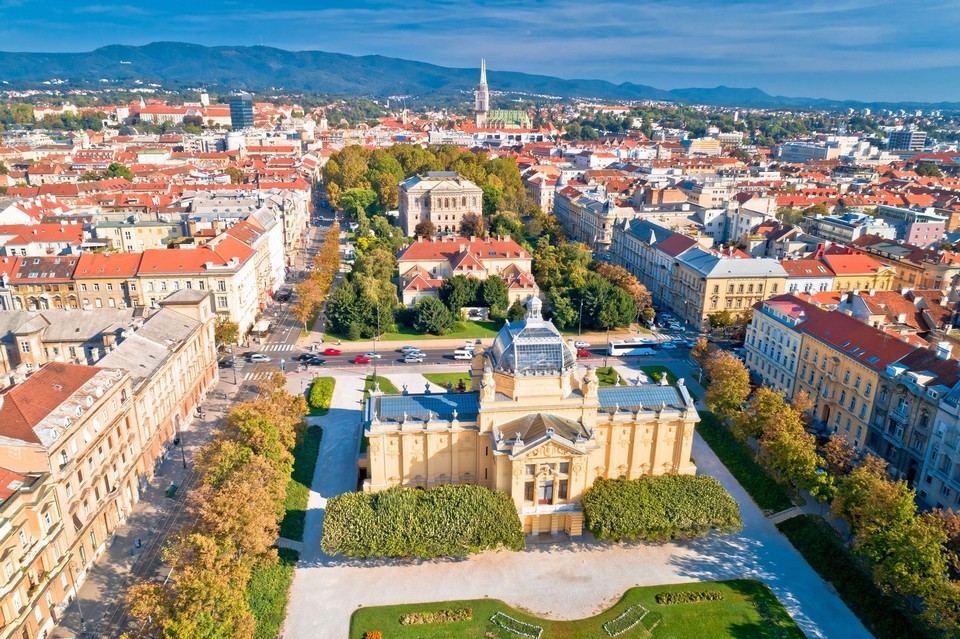
Mimara Museum
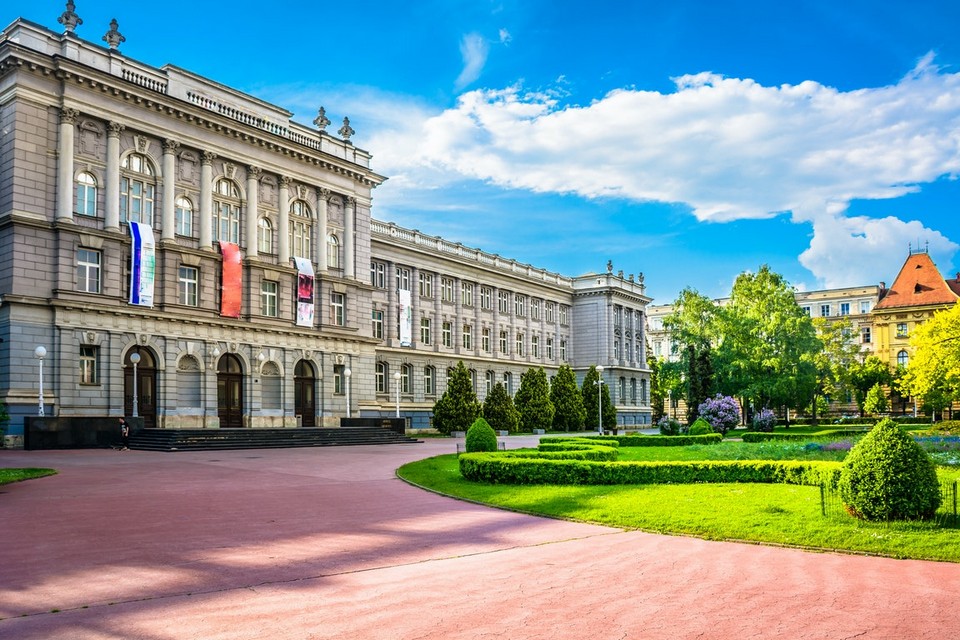
Address: Rooseveltov trg 5, 10000, Zagreb, Croatia
Any visitor when traveling to Zagreb wants to visit the Mimara museum. This museum was built in 1972 in the style of Renaissance architecture. Here you will have the opportunity to admire the precious antiques dating back thousands of years. This museum was built for the purpose of keeping Ante Topic Mimara’s collection. Housed in an elegant Renaissance building, this museum offers visitors a diverse range of origins and dates.
Zagreb City Museum (Muzej grada Zagreba)
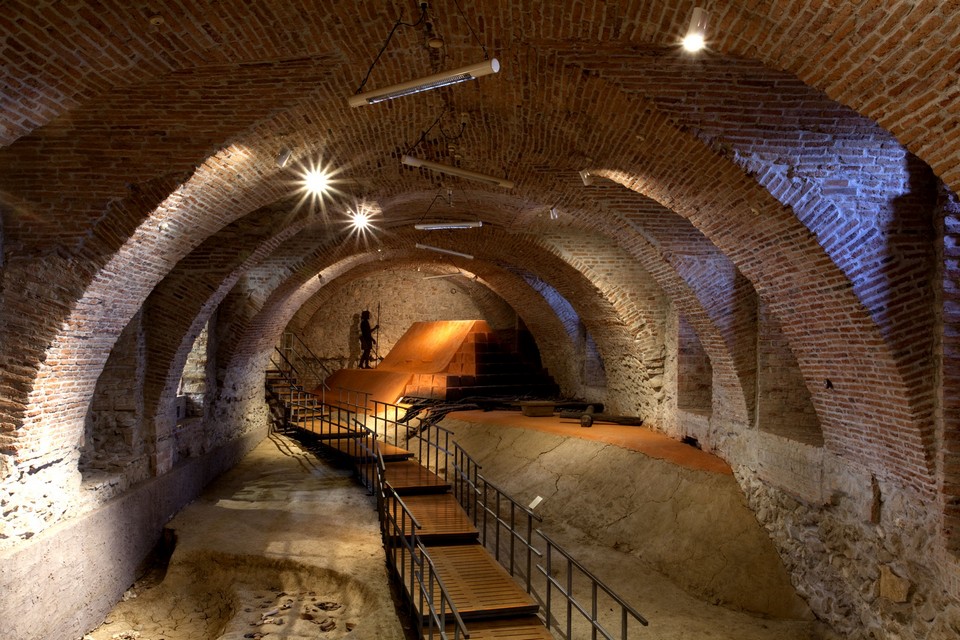
Address: Opatička ul. 20, 10000, Zagreb, Croatia
Hours: 10AM–6PM/Sunday: 10AM–2PM/Monday: Closed
This museum is built along the eastern wall of the Upper Town, and is home to more than 75,000 artifacts, maps, pictures… that telling stories about the history of the city.
Lotrscak Tower
Address: Address: Tomićeva ul. 9, 10000, Zagreb, Croatia
Hours: 10AM–7PM/Monday: Closed
Dating back to the 13th century, the Lotrščak tower is the most prominent landmark in Zagreb. Visitors can climb up to the tower’s observatory and see the whole city. Another famous landmark nearby is one of the five ancient stone gates leading into the city from ancient time. Visitors often go to this gate and the chapel next to it to admire the famous pictures of Jesus and the Virgin Mary.
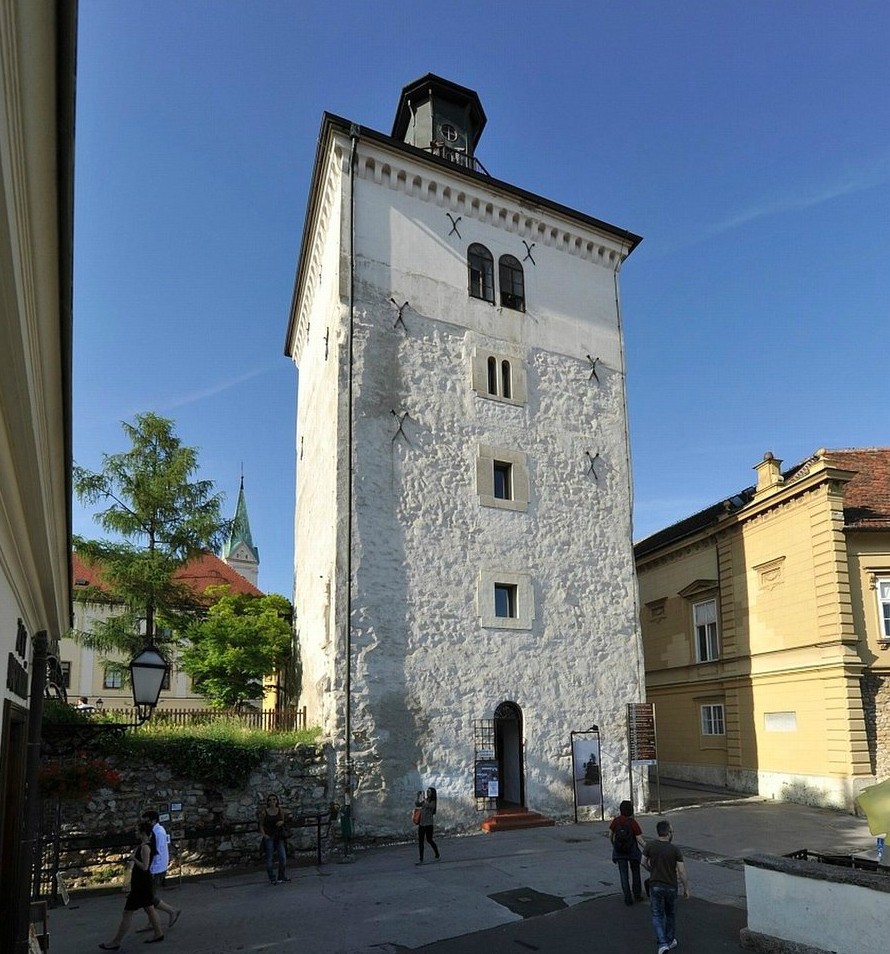
Maksimir Park
Address: Maksimirski perivoj 1, 10000, Zagreb, Croatia
Hours: Open 24 hours
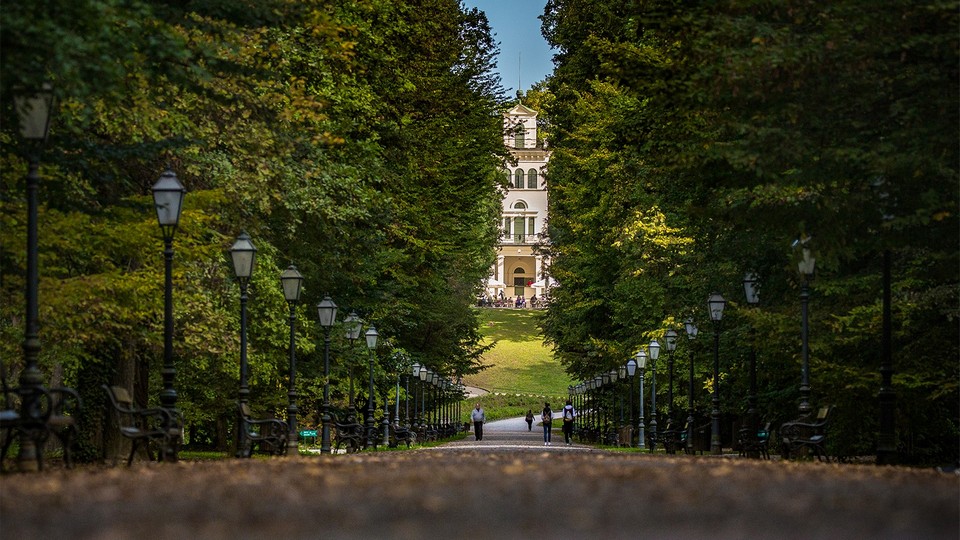
Designed in the style of English gardens, Maksimir Park is the Zagreb’s largest green space. Not only providing a quiet space for relaxing activities and picnics, this park also has a small zoo for young visitors. Once voted one of the most beautiful urban parks in Europe, Maksimir Park is what people call in French «un poumon vert» where Croatian families gather to go for a walk or horseback riding.
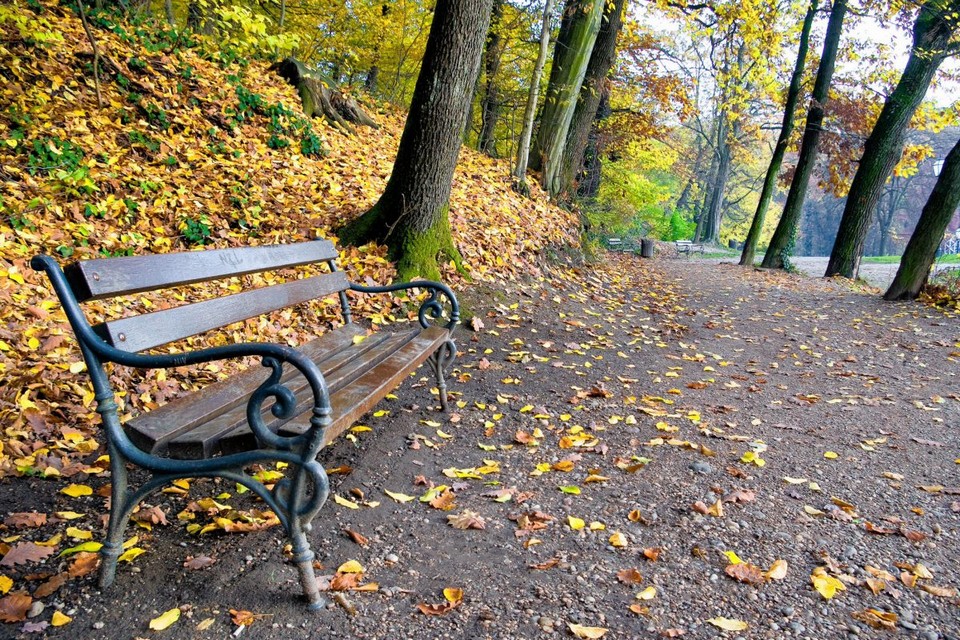
Zagreb’s largest park, Maksimir, which has been welcoming the public since 1794, is considered one of the first parks of the Balkans. The landscape here is like an English Garden, with alleys, lawns and artificial lakes that attract photographers from any angle.
Lake Jarun
Lake Jarun is a tourist attraction located south of the city center, it is also known as the “Sea of Zagreb”. With cycling tracks, a lake for water sports and a sports field for team sports, Lake Jarun is the largest recreational area in Zagreb.
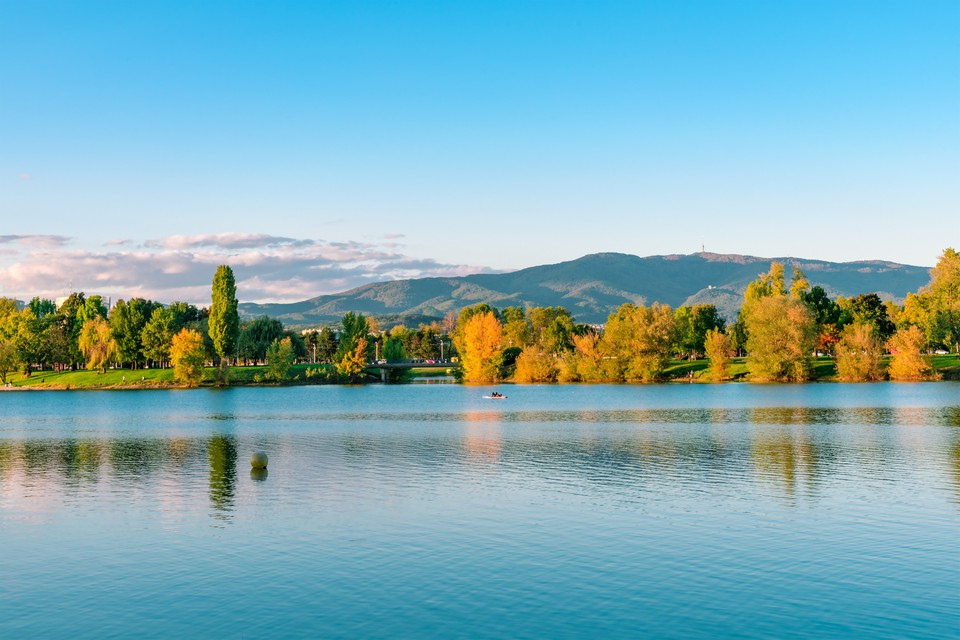
The perfect place to sunbathe or swim on hot summer days. During the day, the lake is a venue for pedestrians and athletes, and nightclubs in the evening welcome those who love the nightlife.
Zagreb Funicular
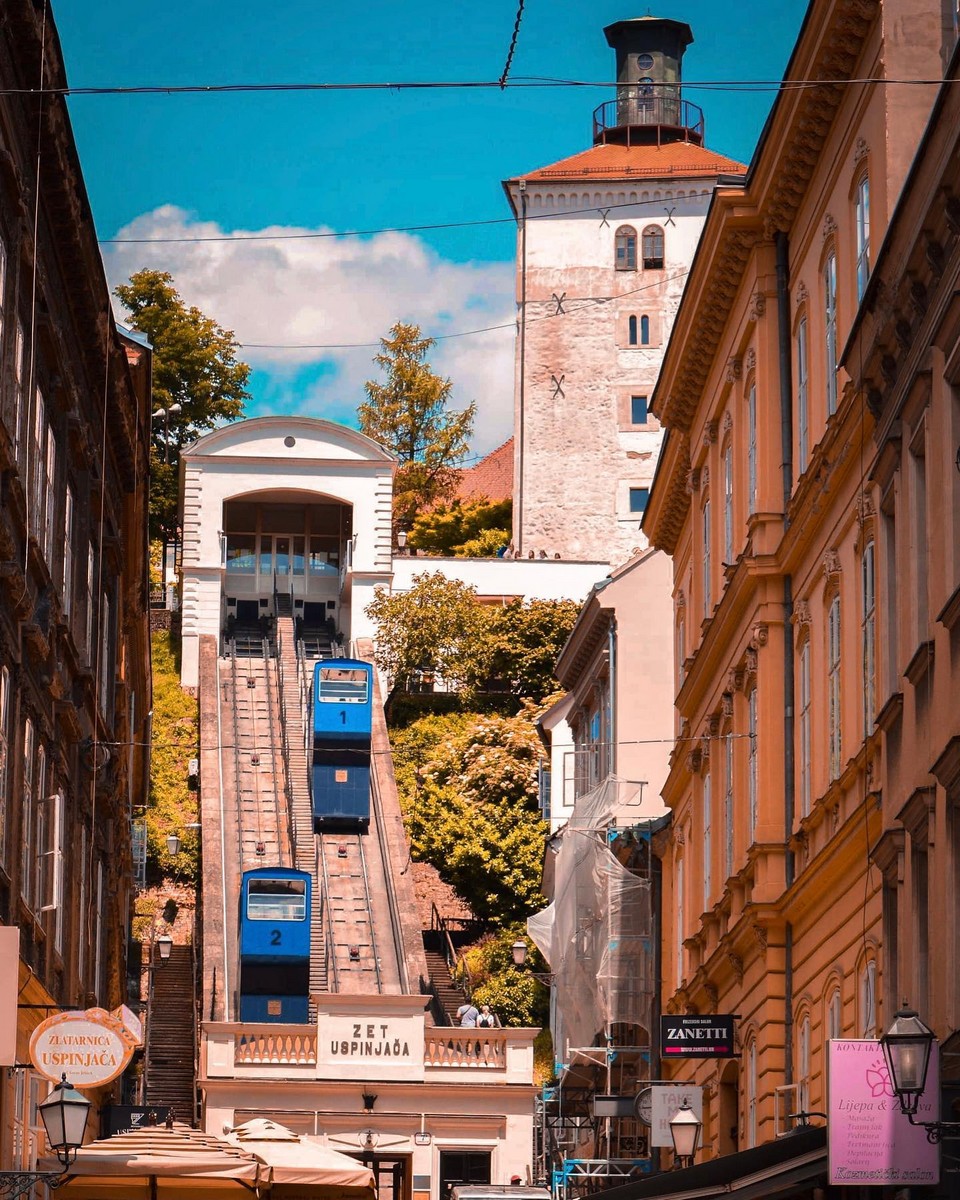
Among the attractions in the city of Zagreb, it is impossible not to mention the Zagreb funicular. Did you know that these Zagreb tracks are voted one of the Europe’s most beautiful funiculars? It’s also the shortest climbing track in the world, measuring just 66 meters long and certainly the most captivating.
Dolac market

Visitors can experience a European outdoor market right in Zagreb. Dolac Market is the largest outdoor market in this city, specializing in selling a variety of items such as fresh agricultural products, meat, handicraft products or honey and cheese… Since ancient times, merchants from all over Croatia have chosen this as a place to market and exchange goods.
This is a local people’s market since 1926, where farmers from neighboring areas bring home-made foods, vegetables and fruits from their home garden to sell. Dolac Market is bustling from dawn until 3pm every day.
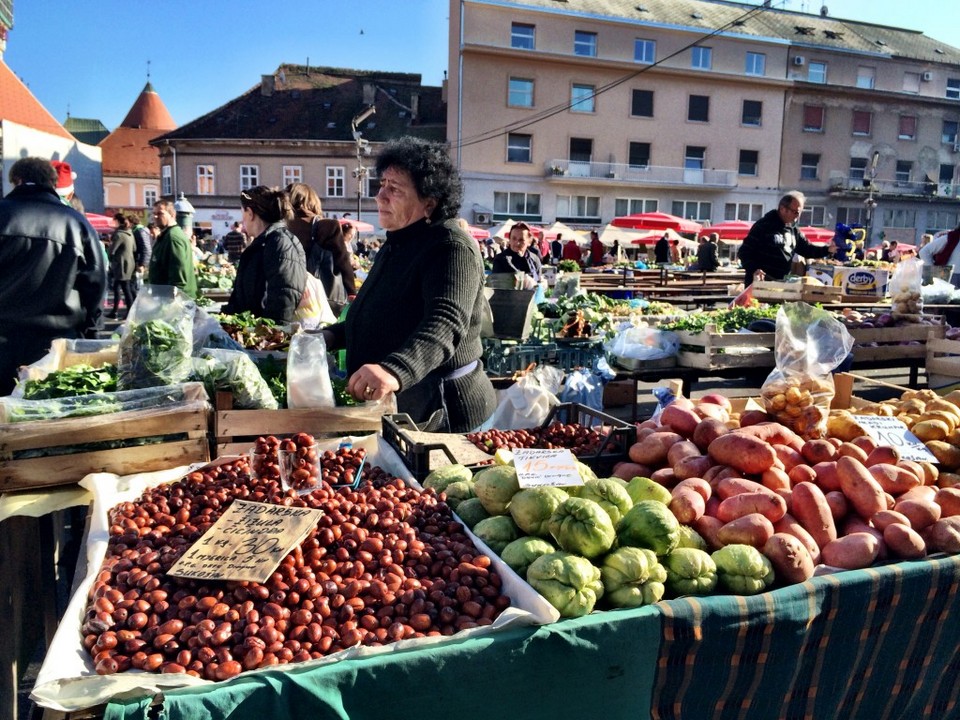

The town of Samobor
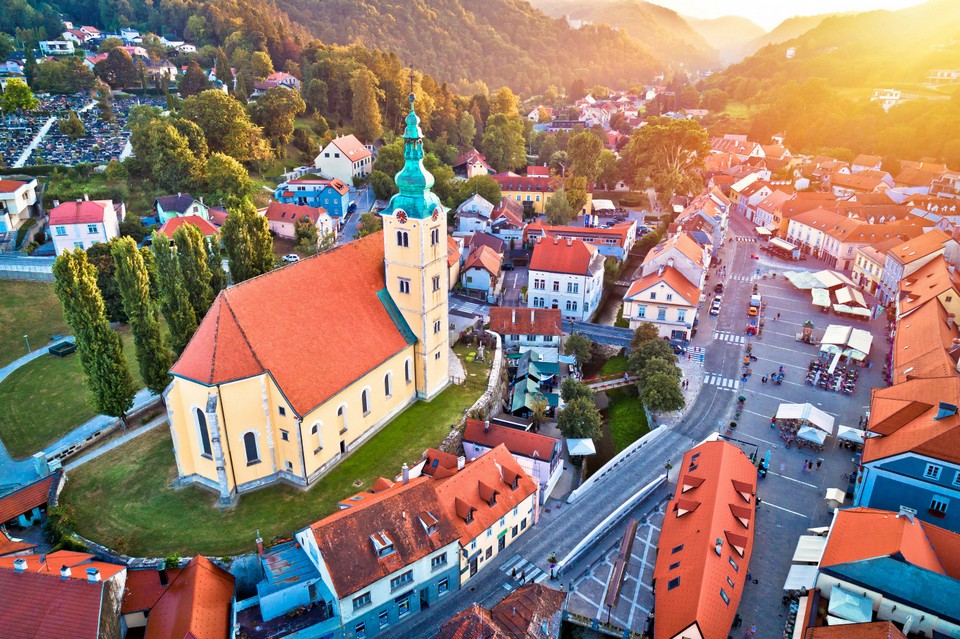
Located not too far from Zagreb, Samobor is an old town from the 13th century, famous for its calm cobblestone streets leading to the beautiful King Tomislav Square (Trg Kralja Tomislava). A famous landmark in this town is the ruins of the fortress on the top of Tepic hill.
Day tour to the Europe’s most beautiful Plitvice Lakes National Park

This was initially the focal point of my trip to Zagreb. This national park is a breathtaking natural lakes complex! I strongly recommend! Please read the beautiful Plitvice lakes guide to know more about how to come and experience to visit Plitvice!
Zagreb travel blog: What to eat ?
Besides the fast food stalls and pizzerias that are familiar in almost every city in Europe, we recommend that you take the time to learn about traditional Croatian cuisine. Some dishes you should try are: Štrukli (cheese filled pastry); cuspajz casserole; Knedli Potato Doughnuts with Honey or veal stuffed with cheese Zagrebački odrezak (Zagreb Steak, Zagreb schnitzel).
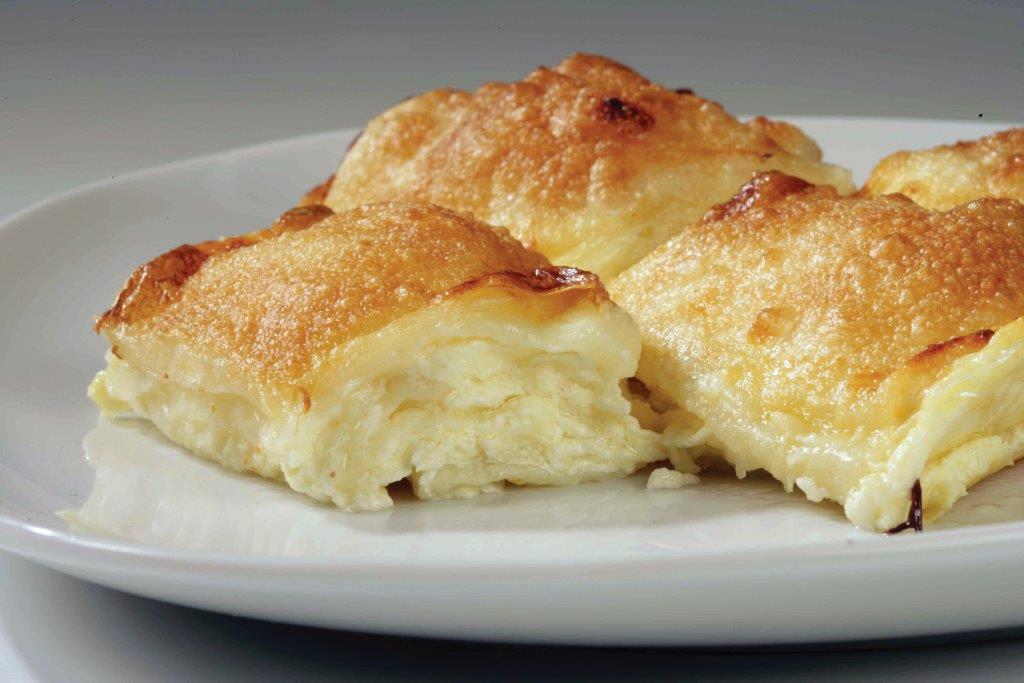

Also you can learn more about Croatian cuisine in this article.
Zagreb blog: Where to stay?
Below we recommend more best budget, mid-range and upscale hotels with good ratings and reviews you can refer to.
- Hotel Dubrovnik (Agoda.com or Booking.com)
- DoubleTree by Hilton Zagreb (Agoda.com or Booking.com)
- Best Western Premier Hotel Astoria (Agoda.com or Booking.com)
- Hotel Jagerhorn (Agoda.com or Booking.com)
- The Westin Zagreb (Agoda.com or Booking.com)
- Sheraton Zagreb Hotel (Agoda.com or Booking.com)
- Chillout Hostel Zagreb
Check out more top hotels in Zagreb on Agoda.com or Booking.com.
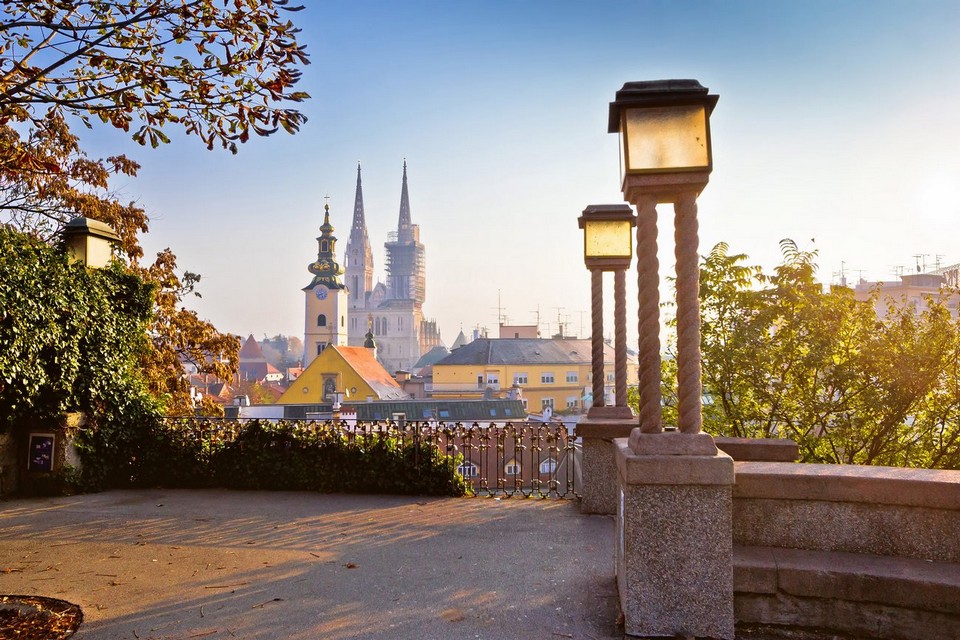
Zagreb is gentle and quiet, profound and subtle enough to attract visitors to this city. Anywhere, a work of art born here makes visitors have to experience it, so that when they leave, they are still full of impressions of this place, a very unique and tranquil place by strange stories.
Zagreb blog: Some best day tours, trips, activities and transfer services, tickets in, from and to Zagreb you can refer to
- Zagreb Walking Tour and a Visit to the Museum of Broken Relationships
- Walking Tour in Zagreb with Funicular Ride
- Graz and Zagreb Small Group Day Tour to Croatia from Vienna
- Food Tour in Zagreb
- Ljubljana and Lake Bled Whole Day Tour from Zagreb
- Plitvice Lakes National Park and Rastoke Day Tour from Zagreb
- Plitvice Lakes and Rastoke Village Day Tour from Zagreb with Skip-the-Line Ticket
- Plitvice Lakes National Park Whole Day Tour from Zadar
- Plitvice Lakes National Park Day Tour from Split or Trogir

Are you looking for more day trips from Zagreb: Tours, activities, attractions and other things? Let’s check it out here. And Dubrovnik here.































![10 best airports in Asia in 2016 [RANKED] kuala-lumpur-international-airport-best airports in asia in 2016 by skytrax ratings](https://livingnomads.com/wp-content/uploads/2016/08/29/kuala-lumpur-international-airport-best-airports-in-asia-in-2016-by-skytrax-ratings-218x150.jpg)











